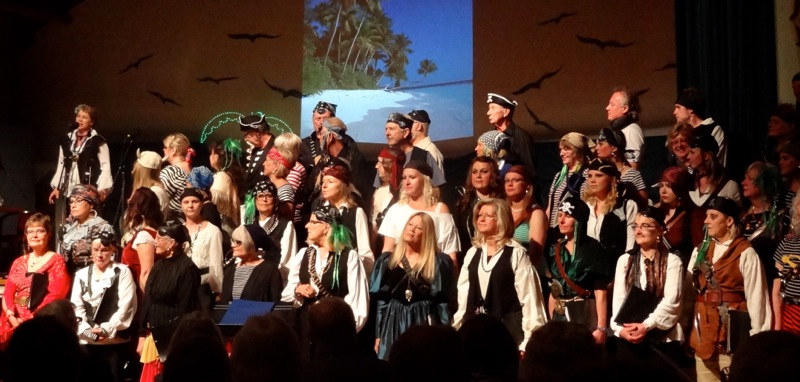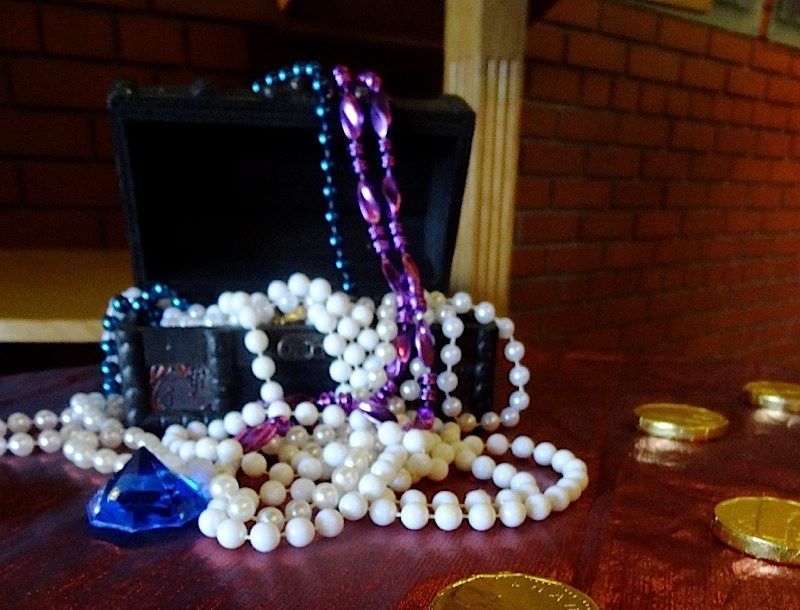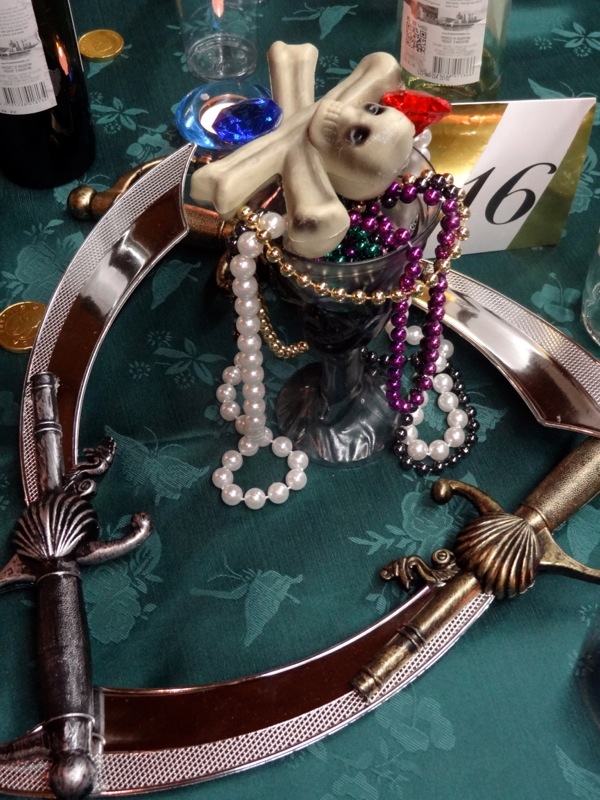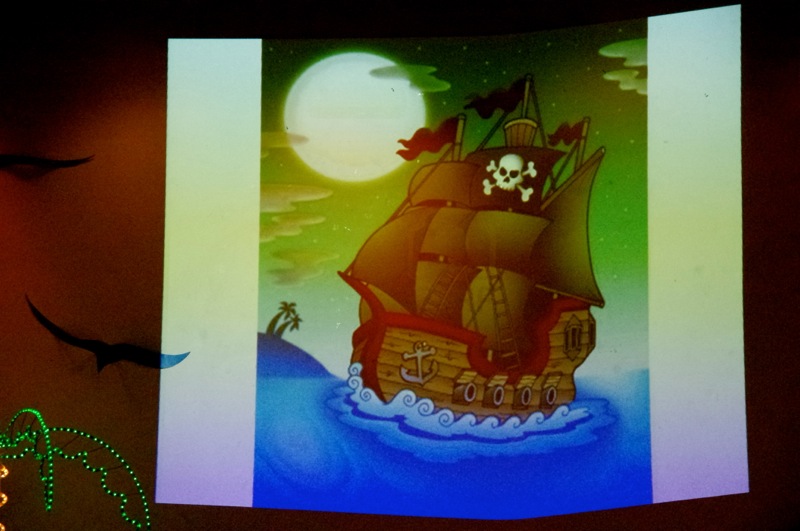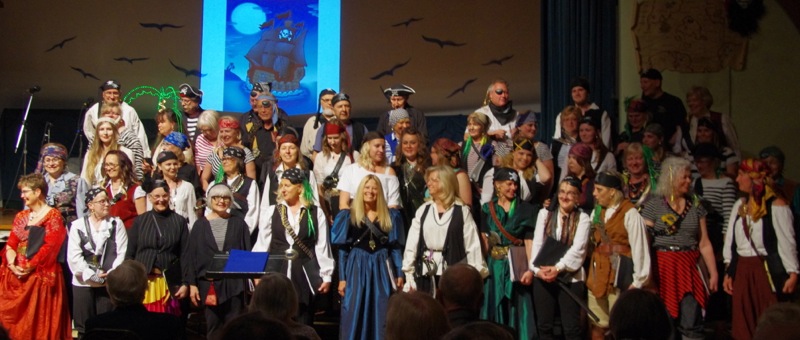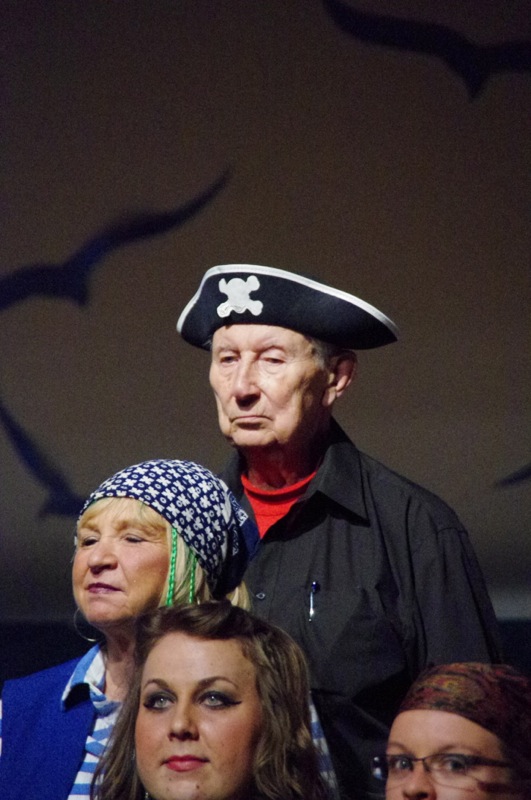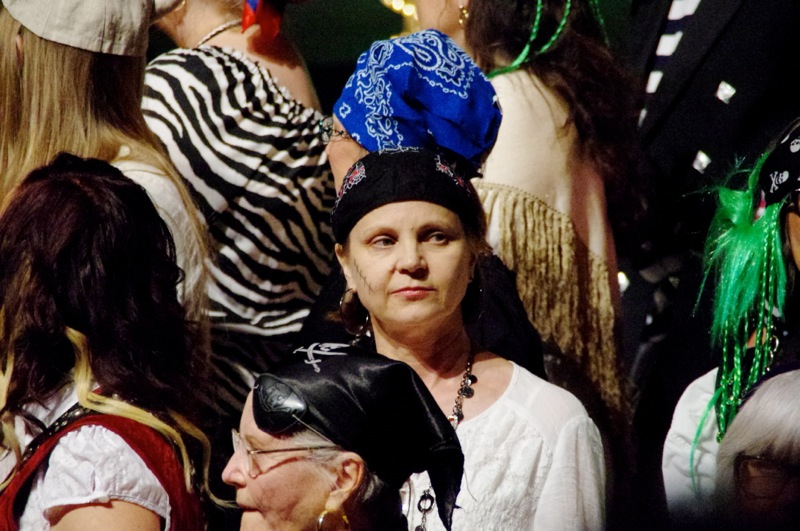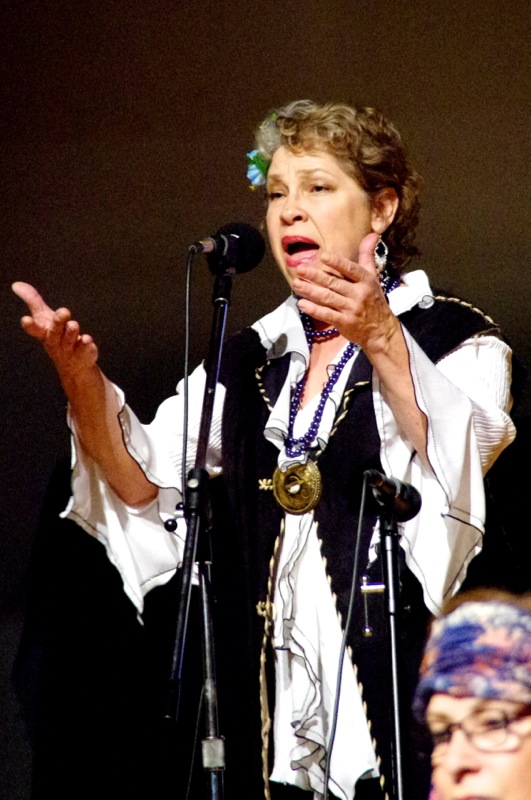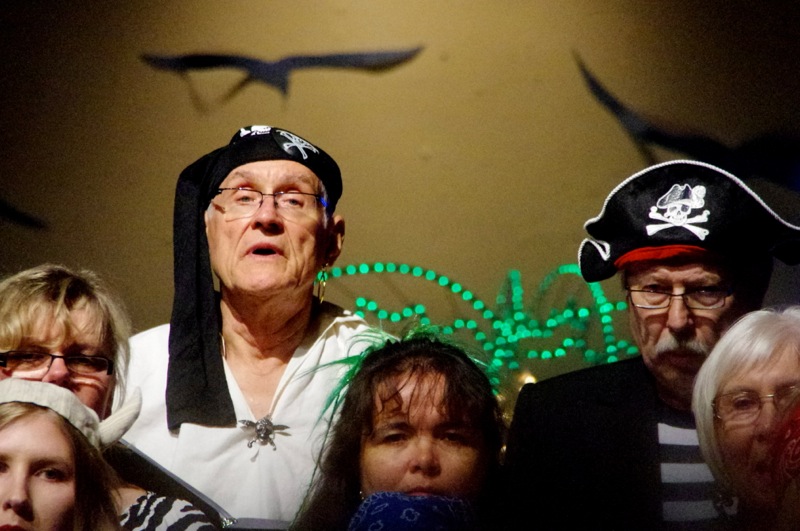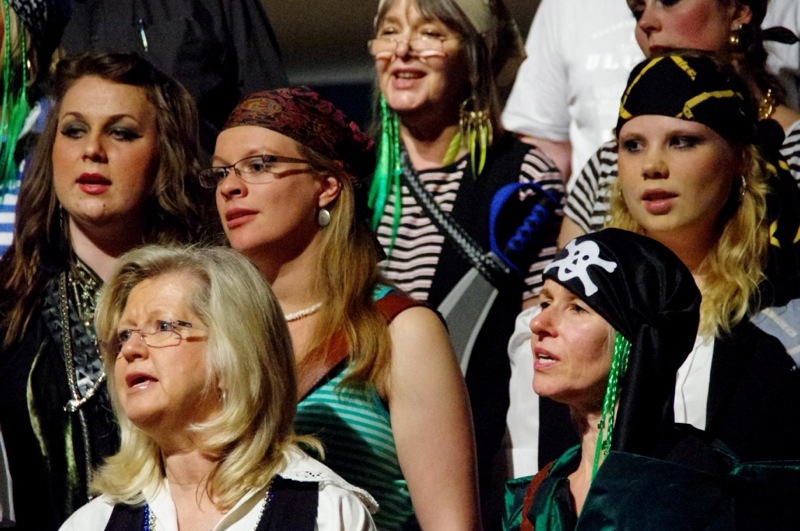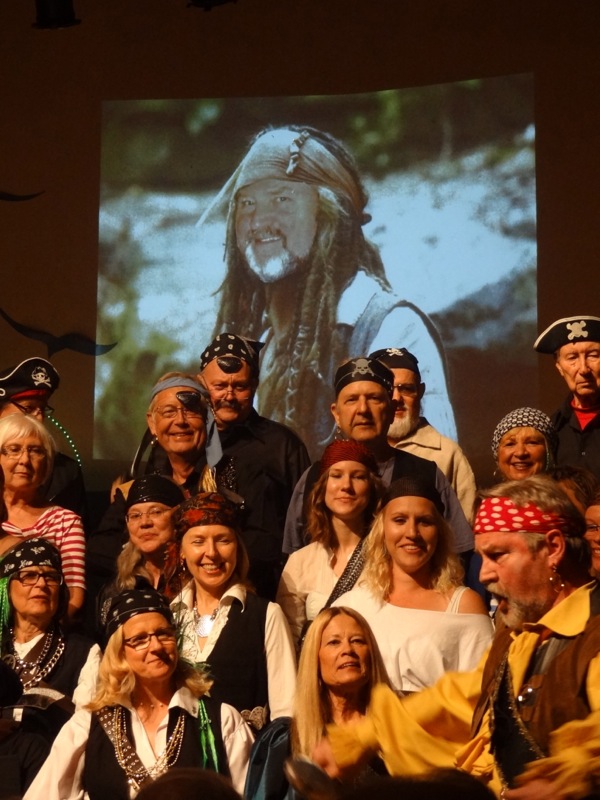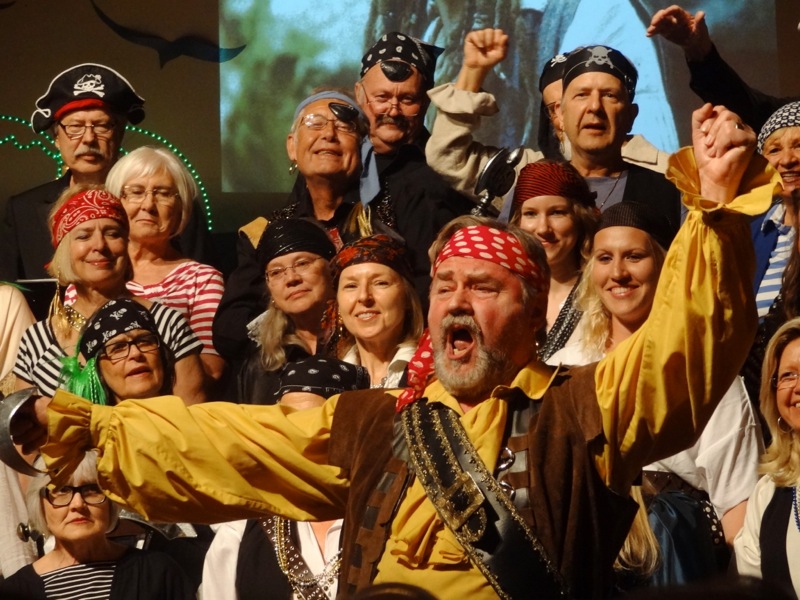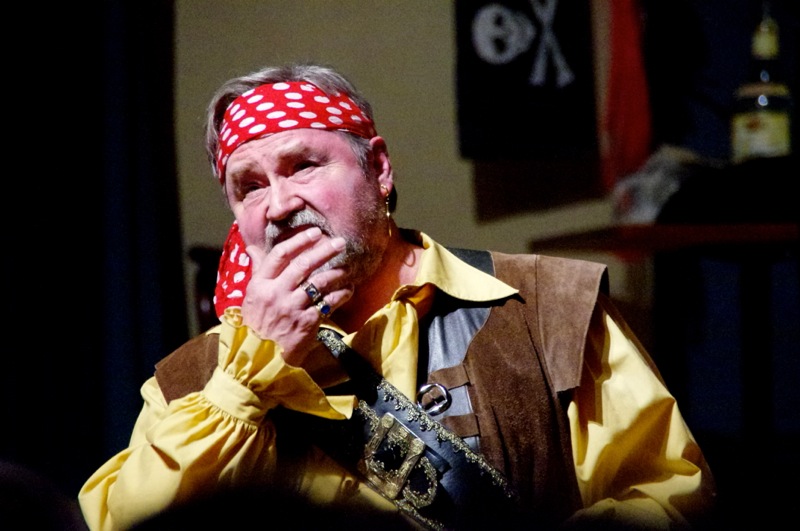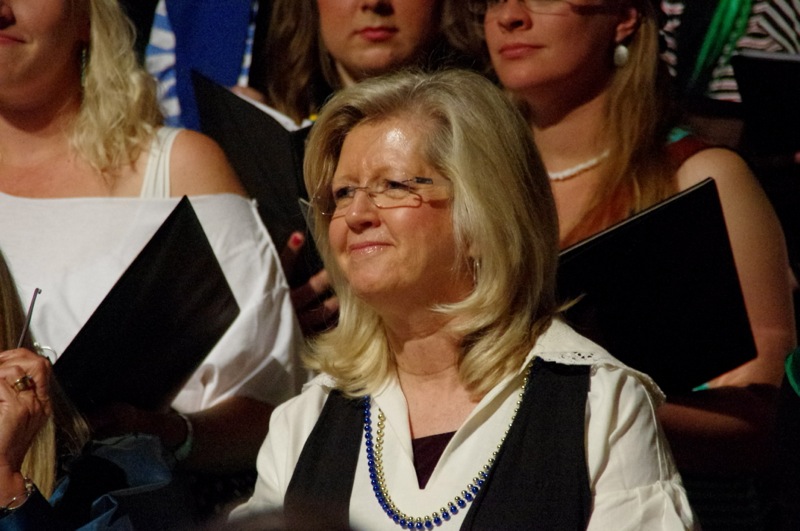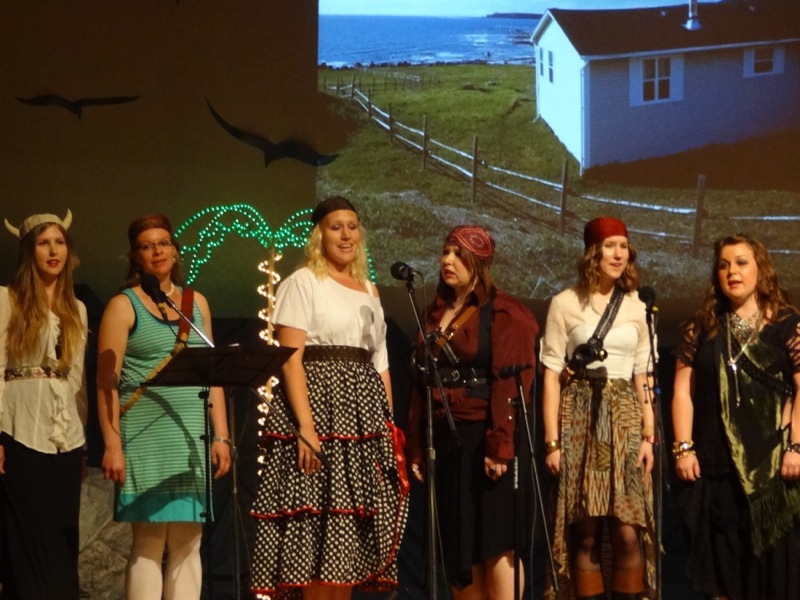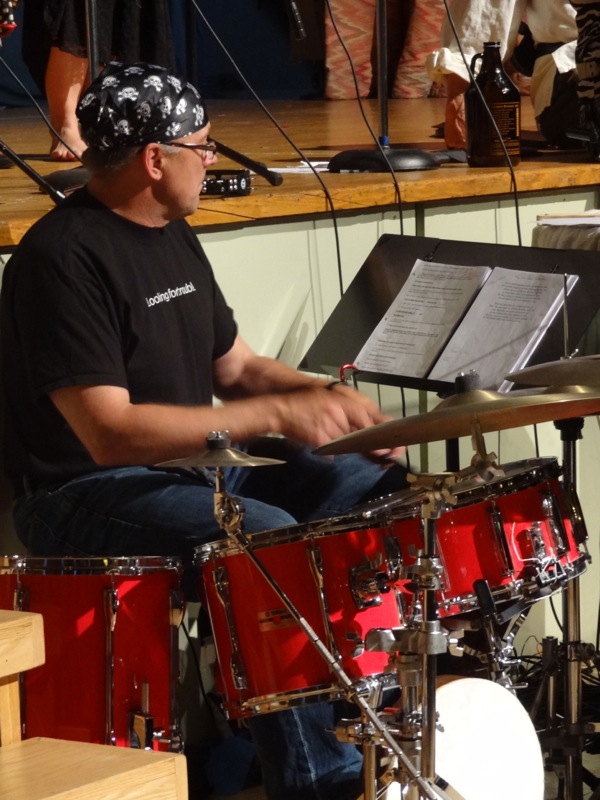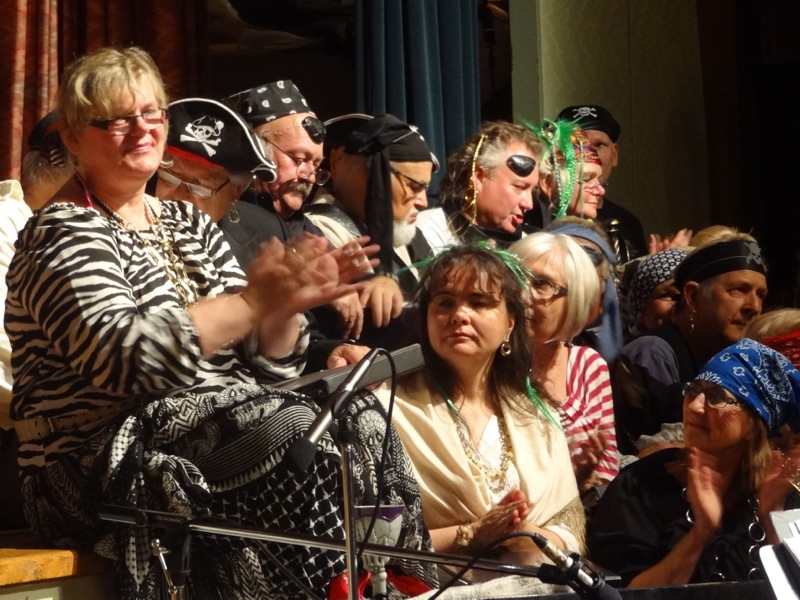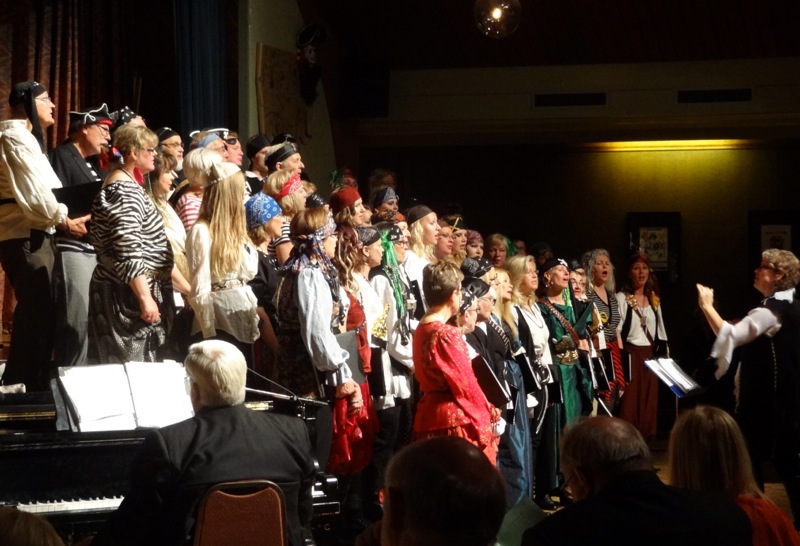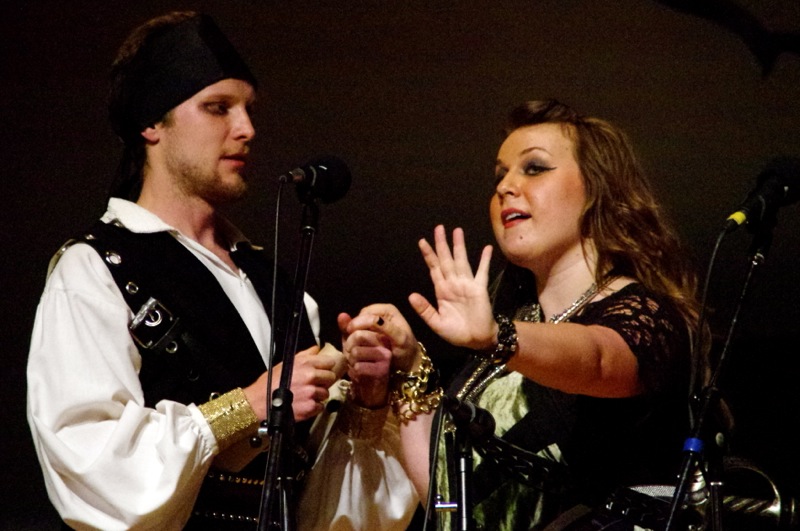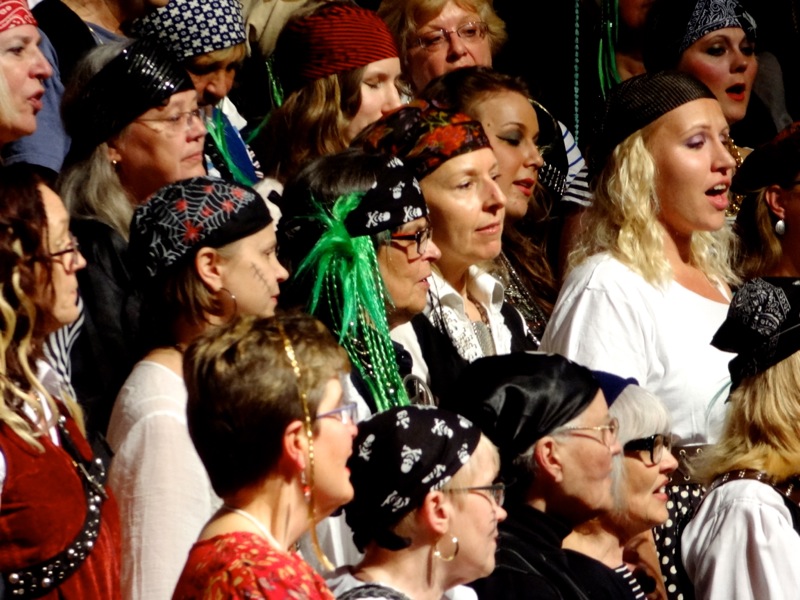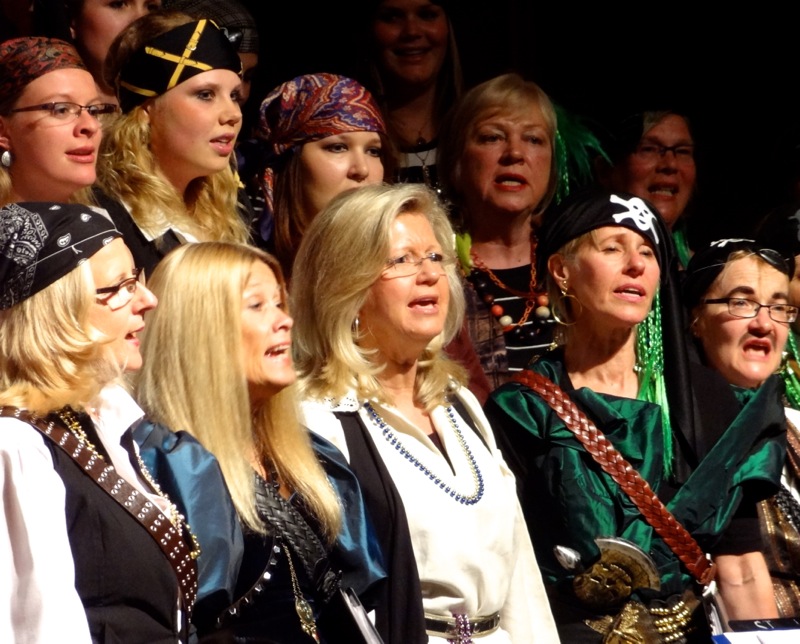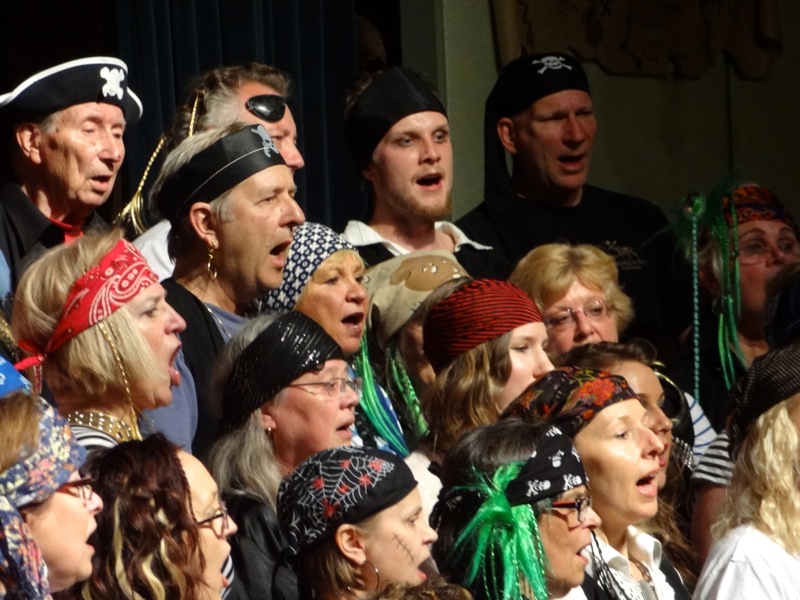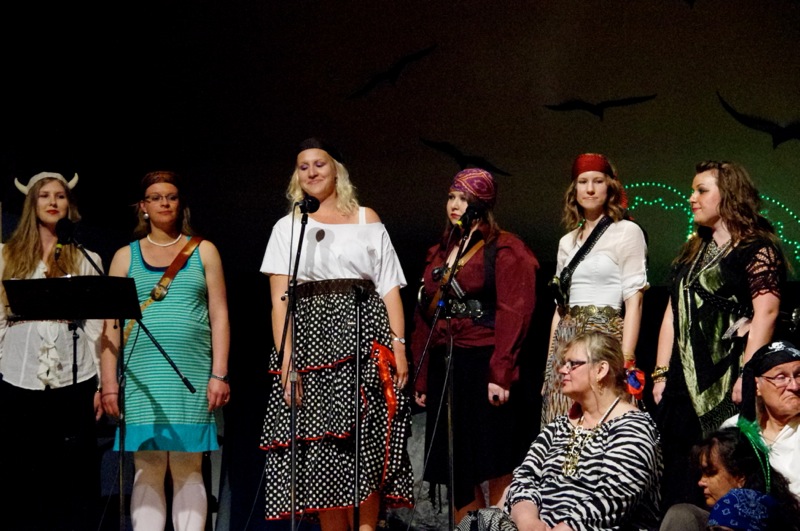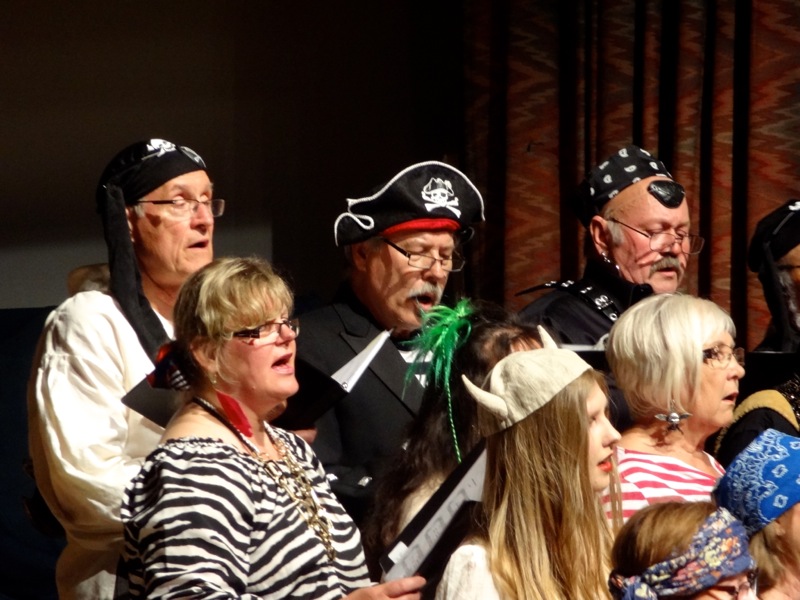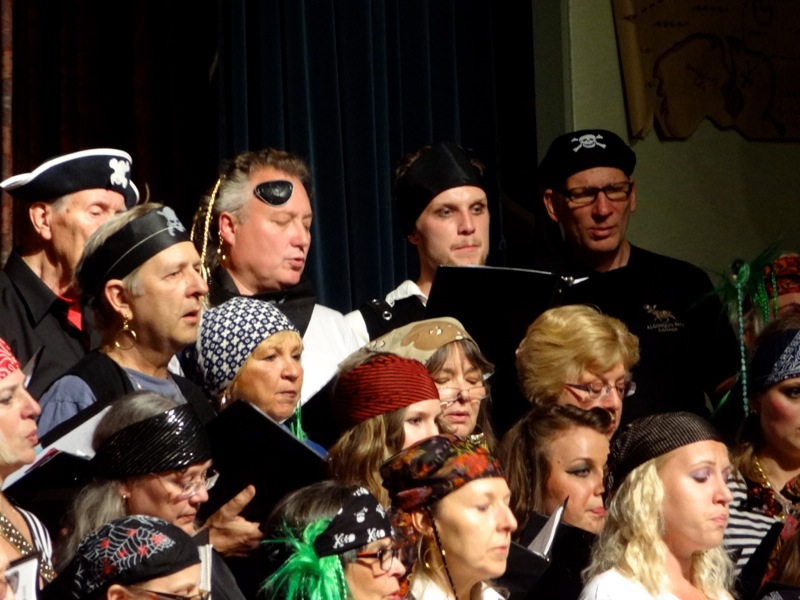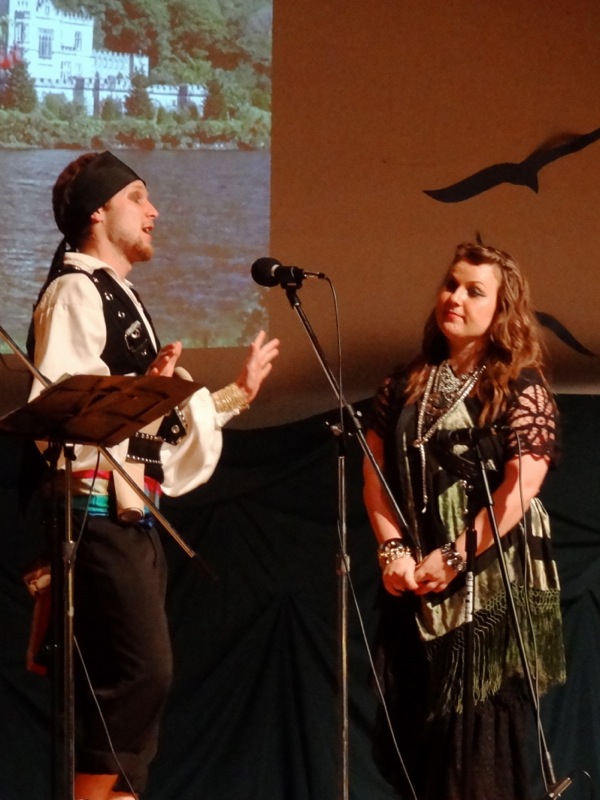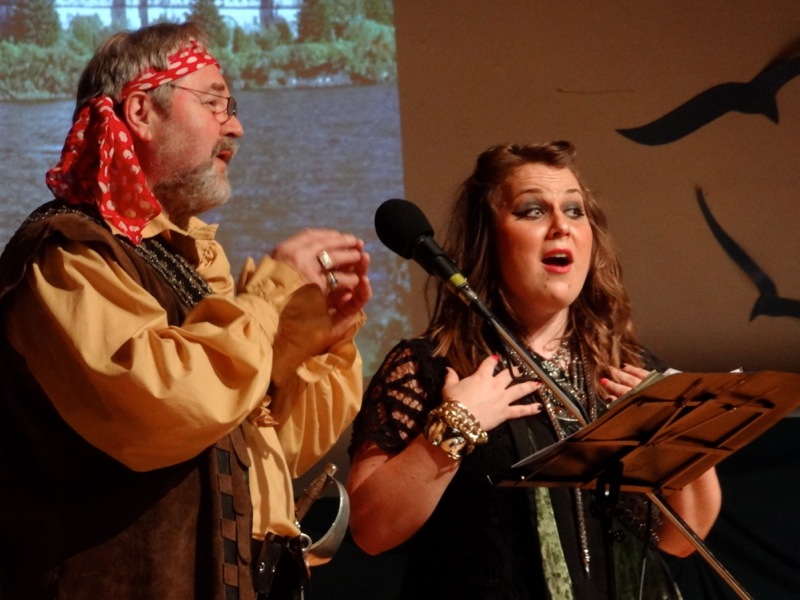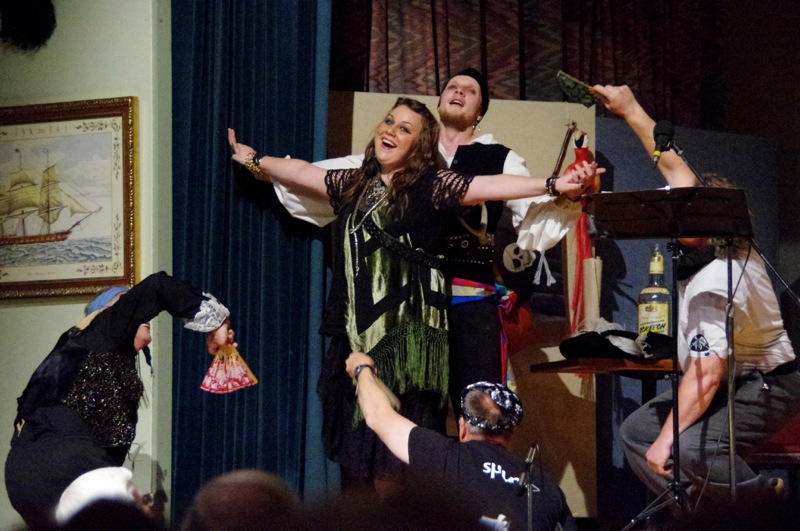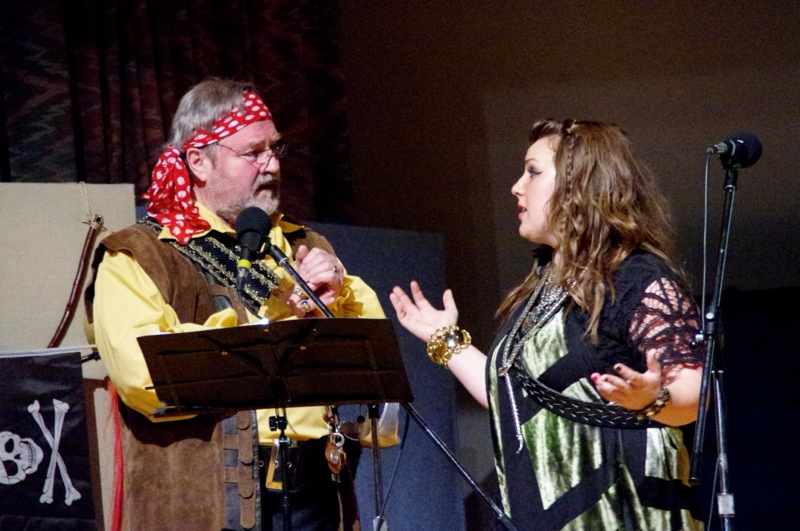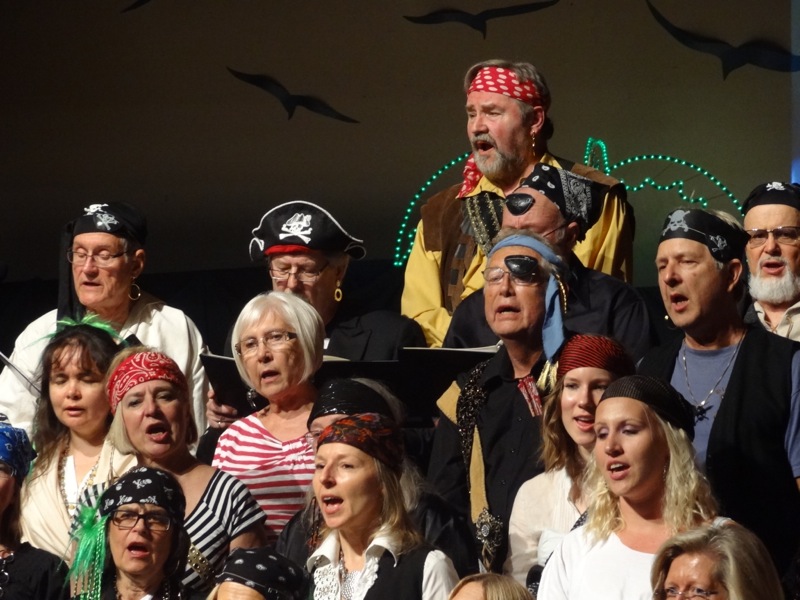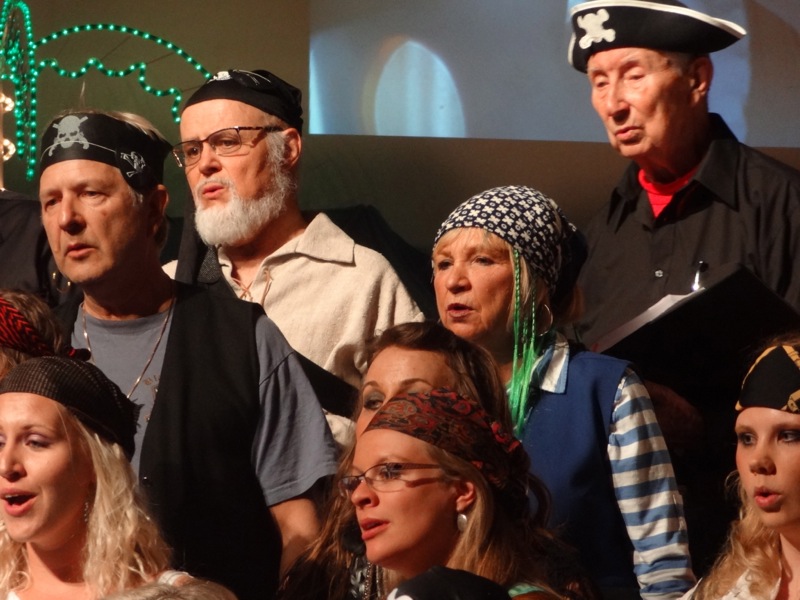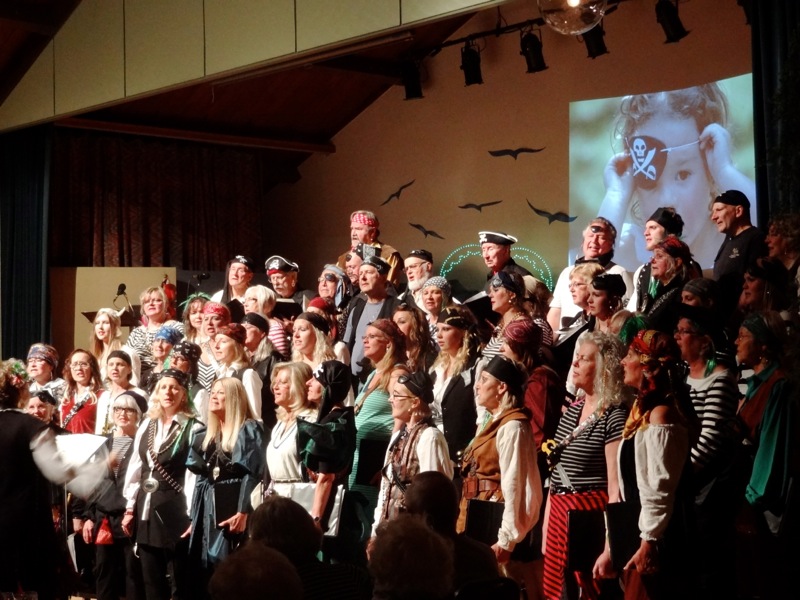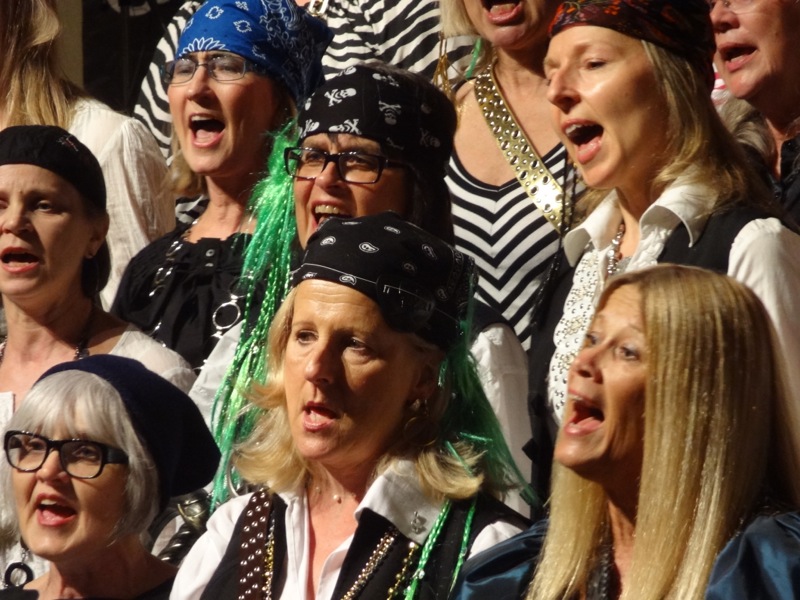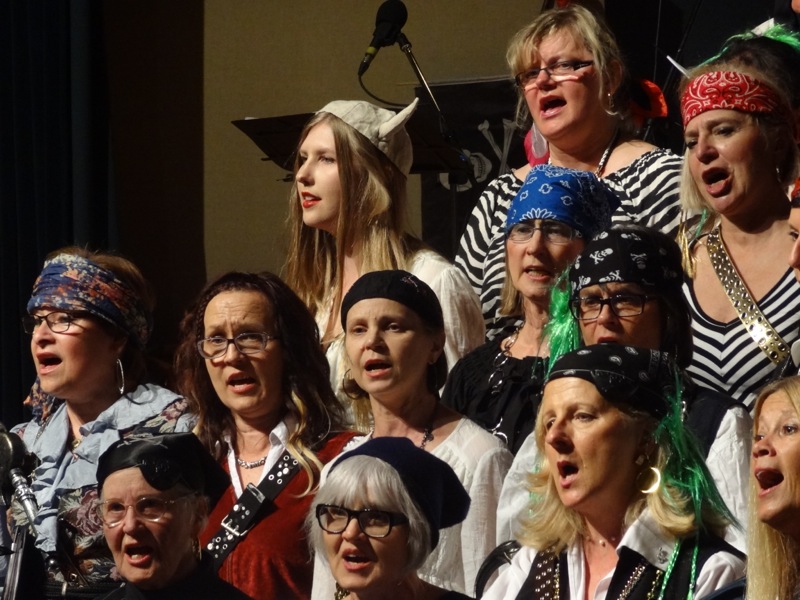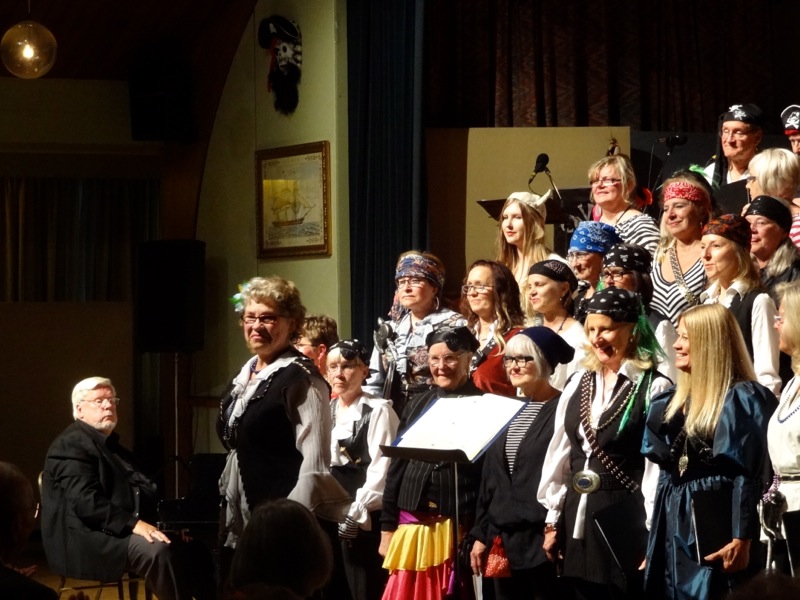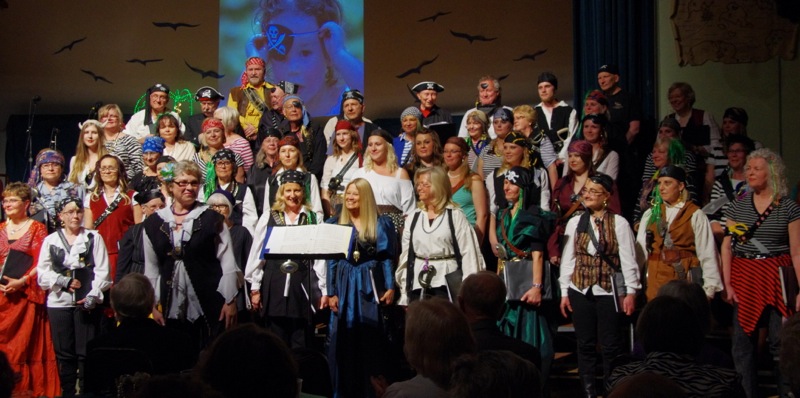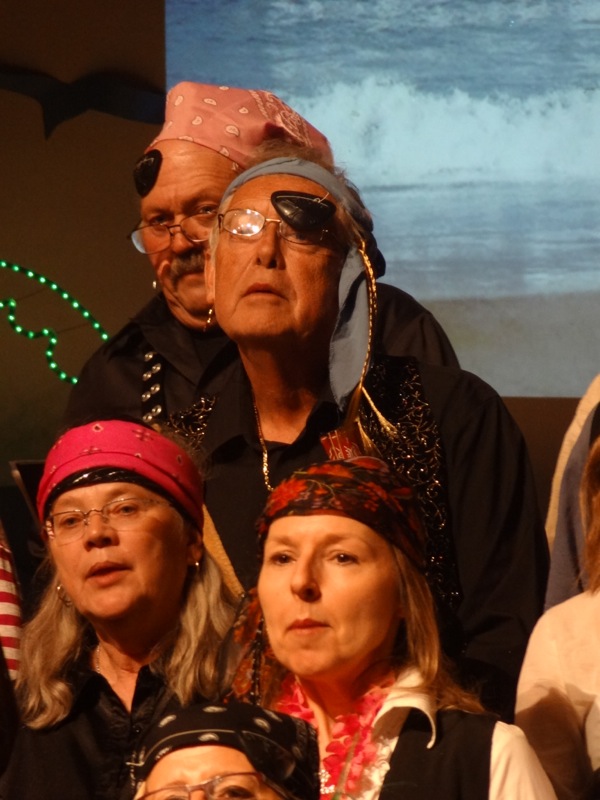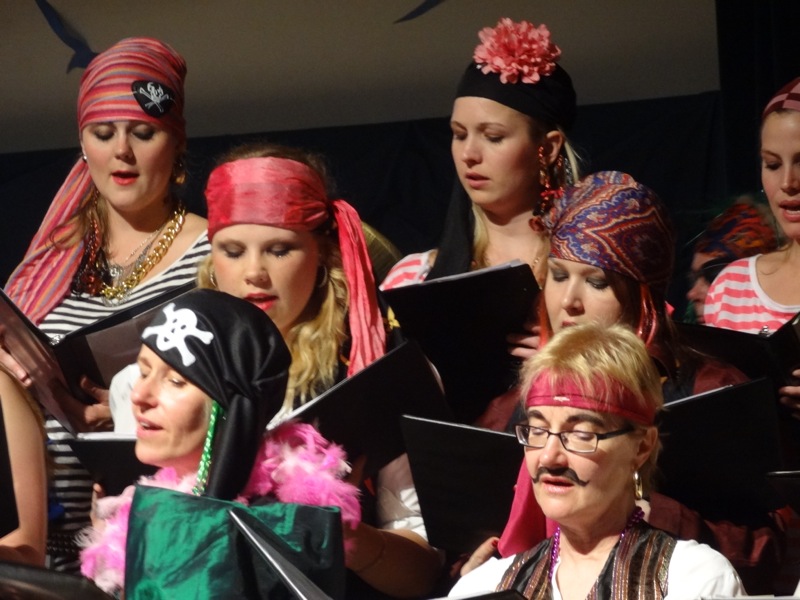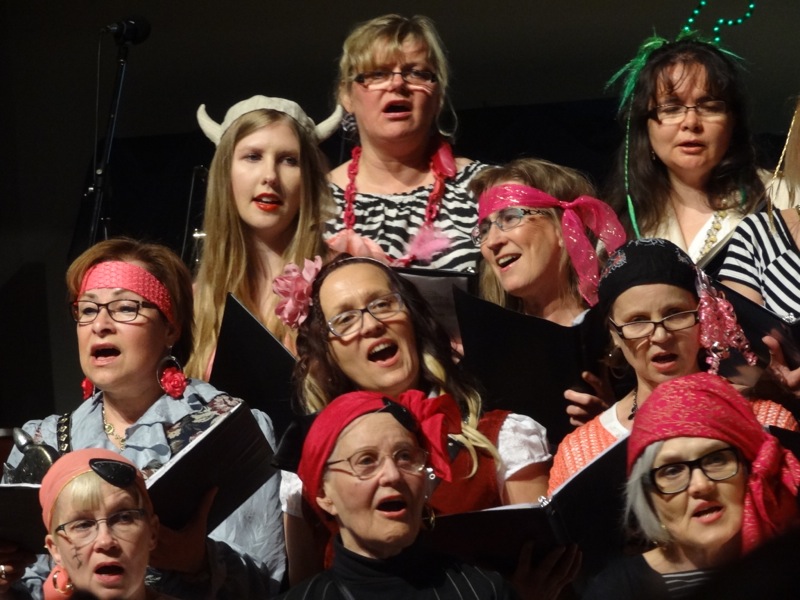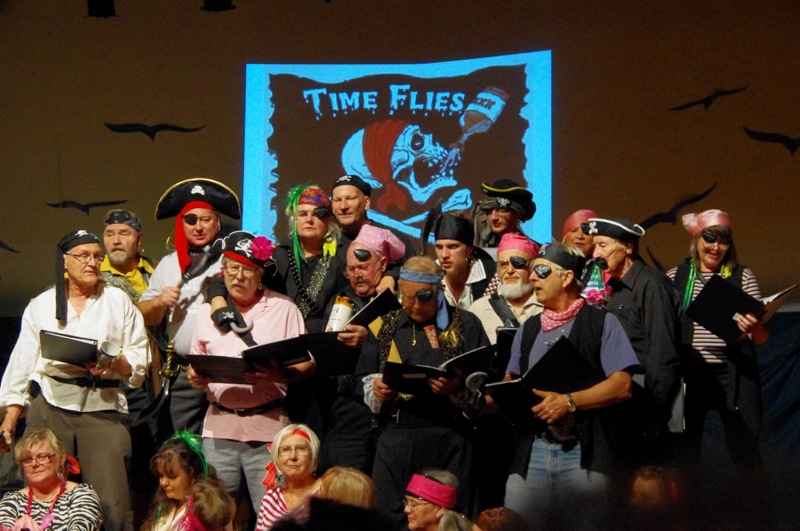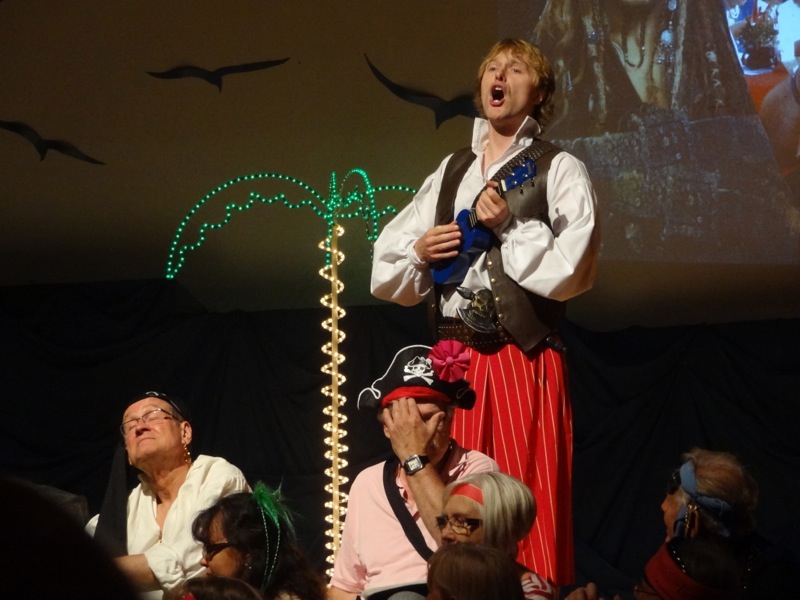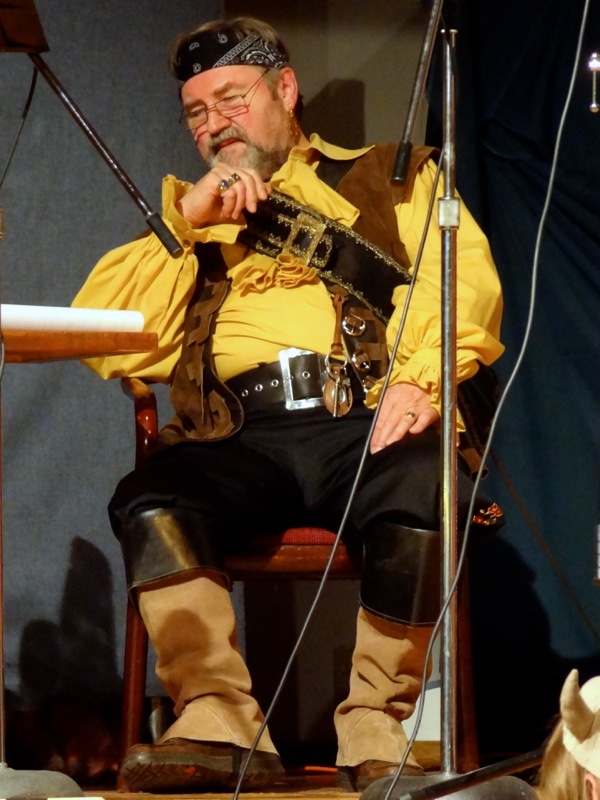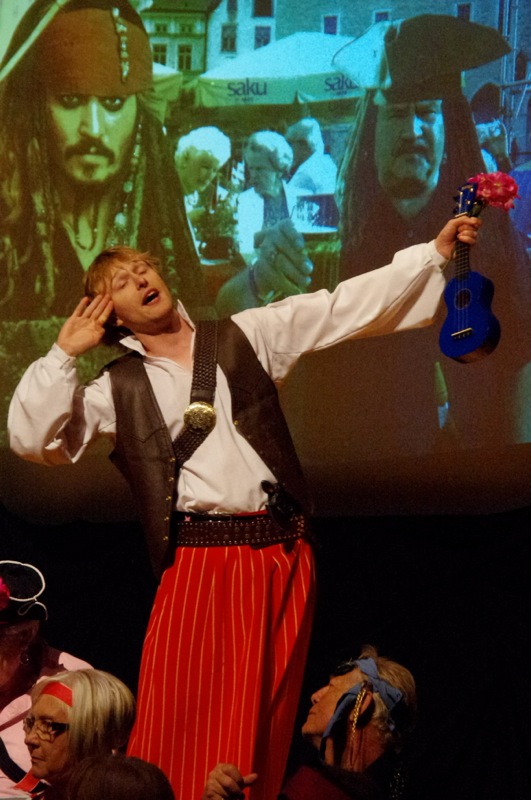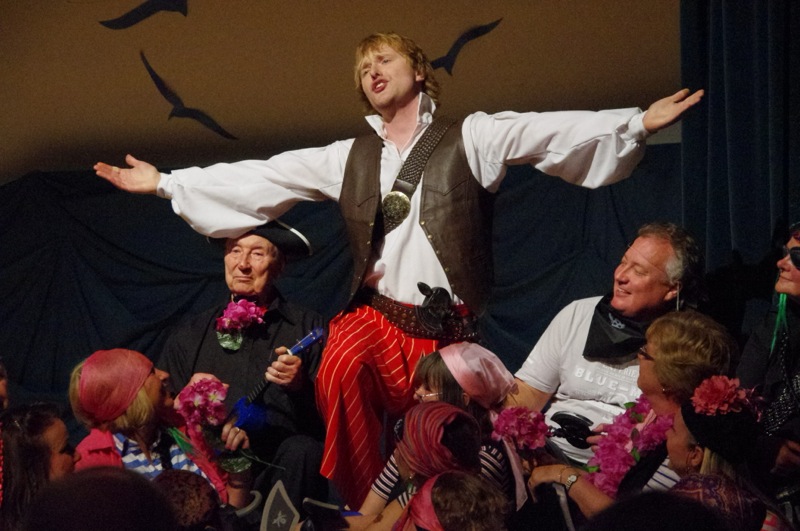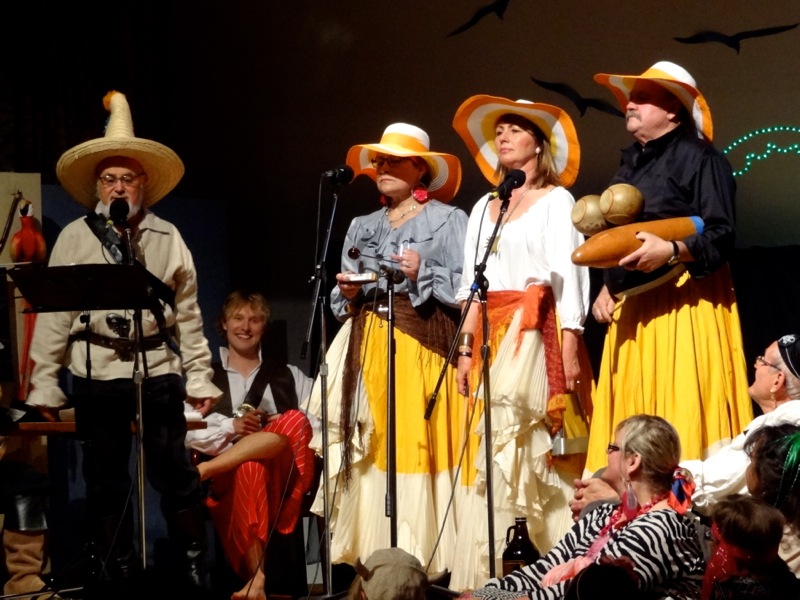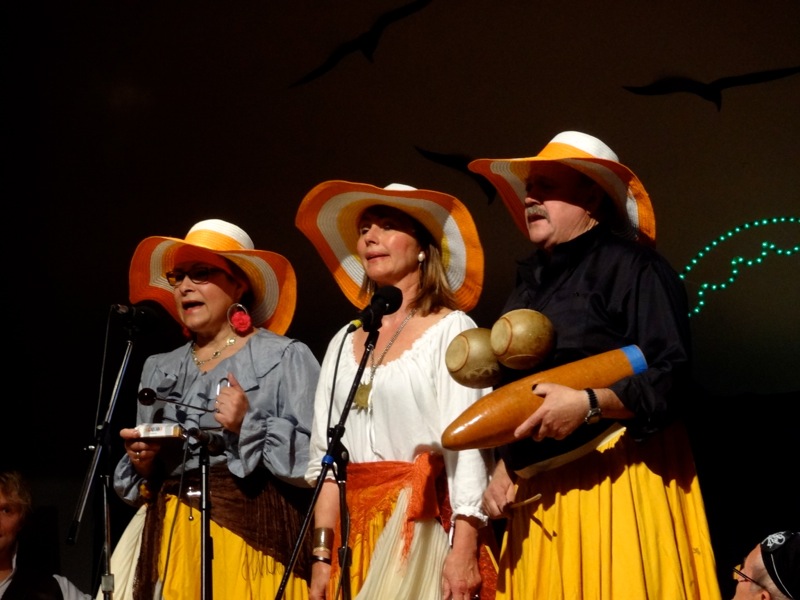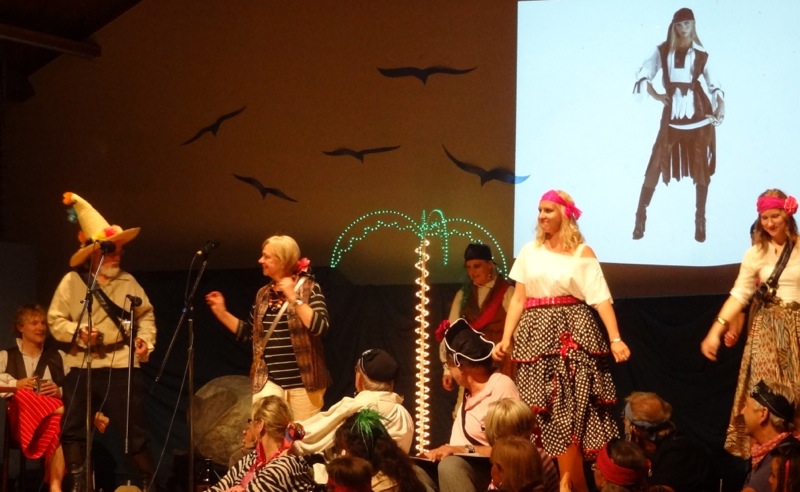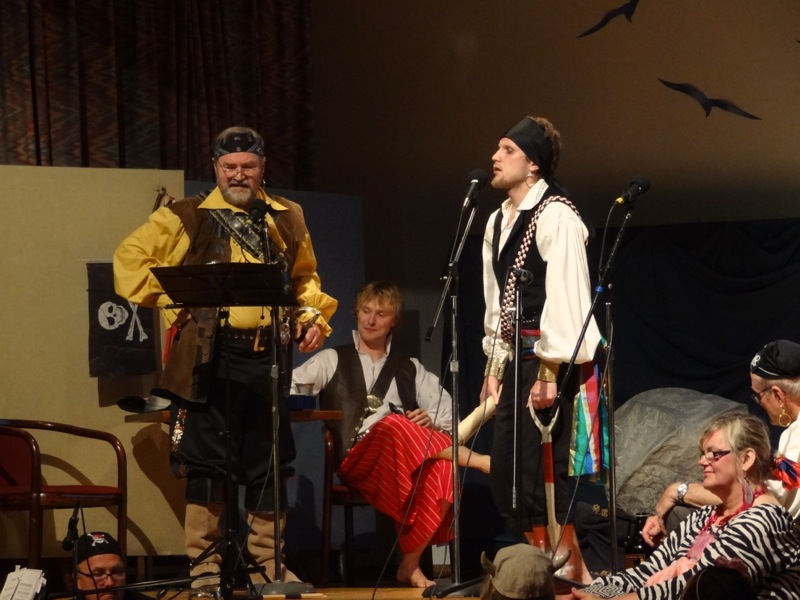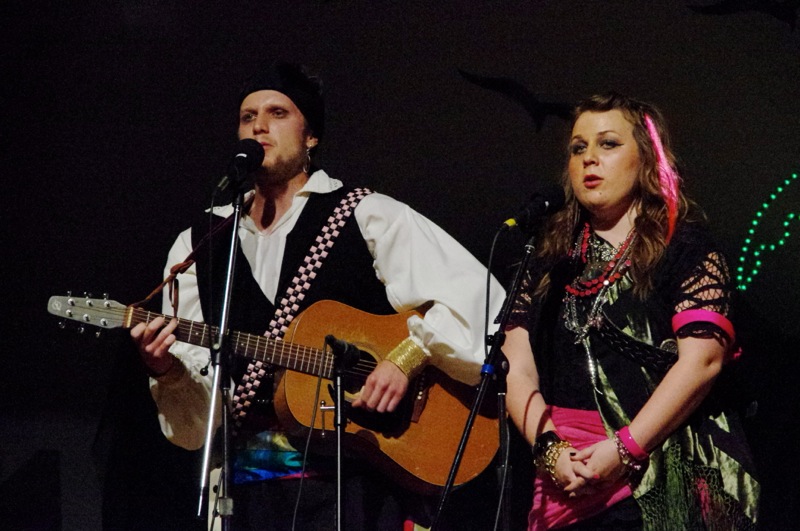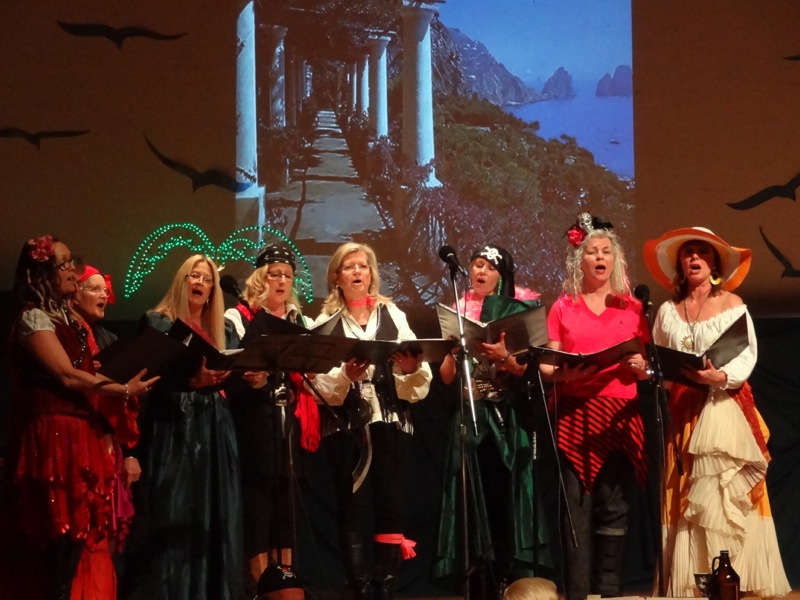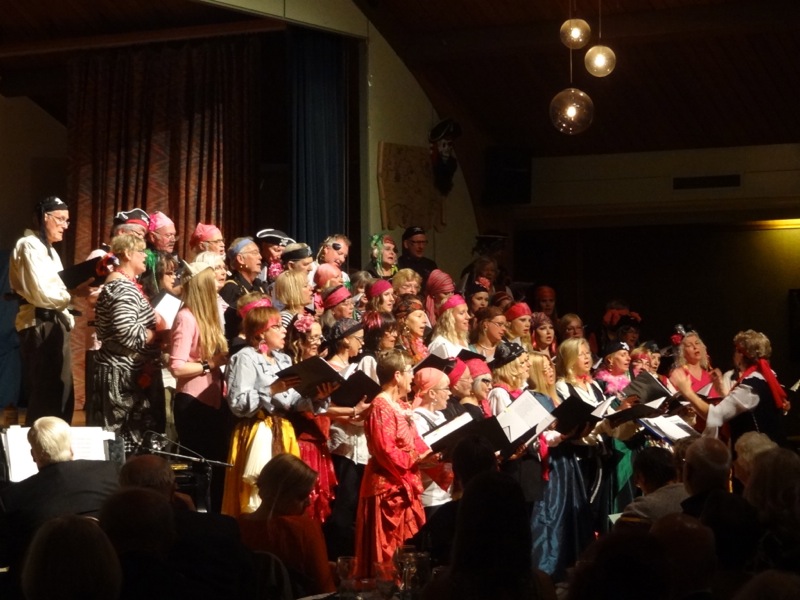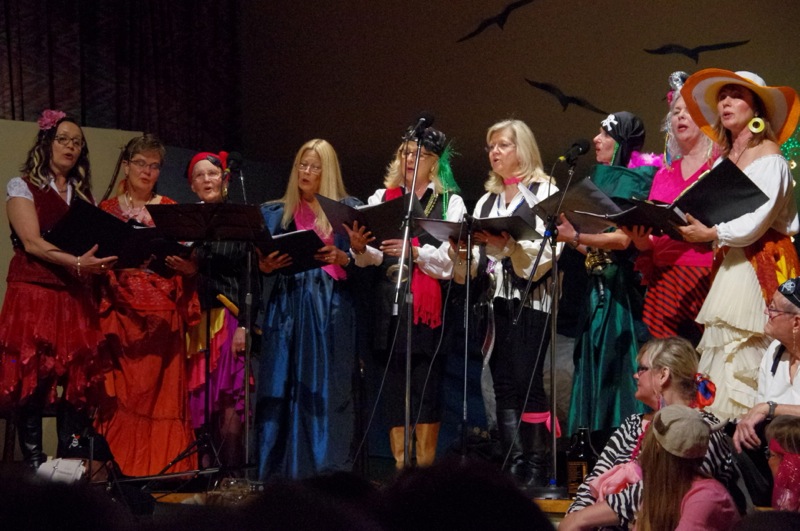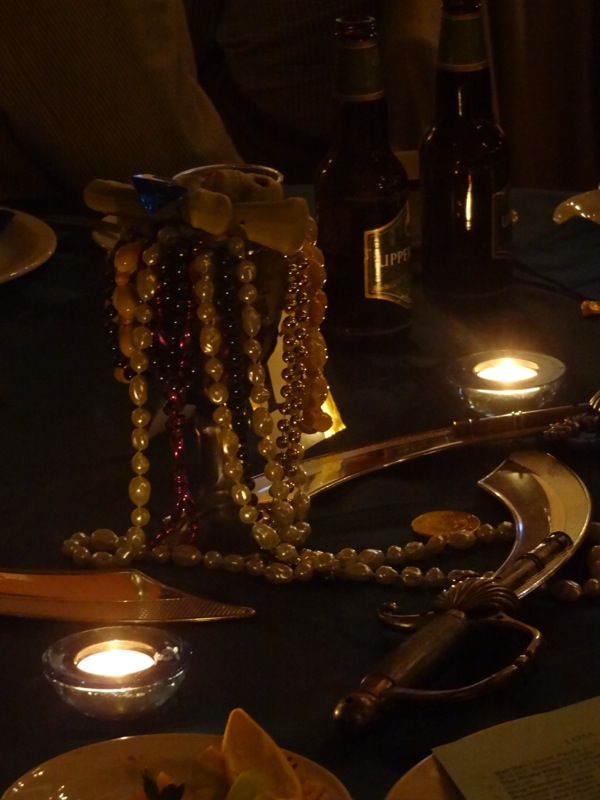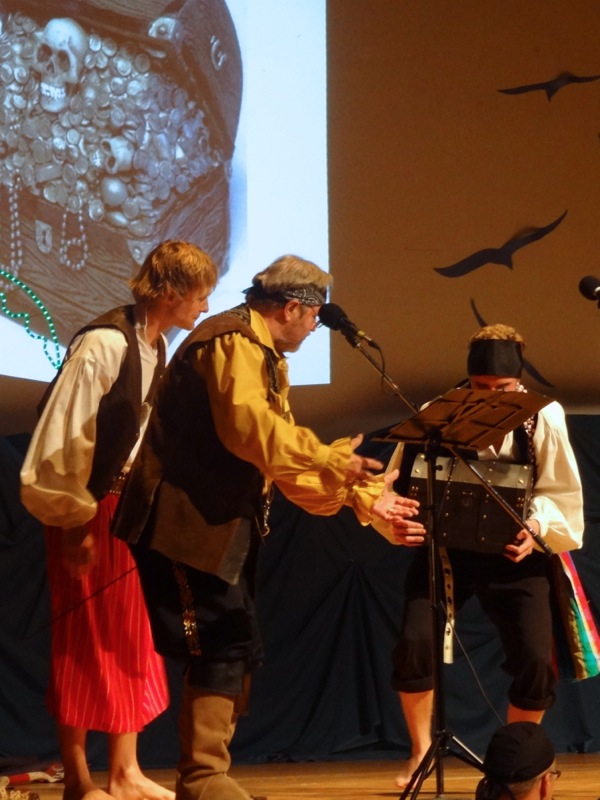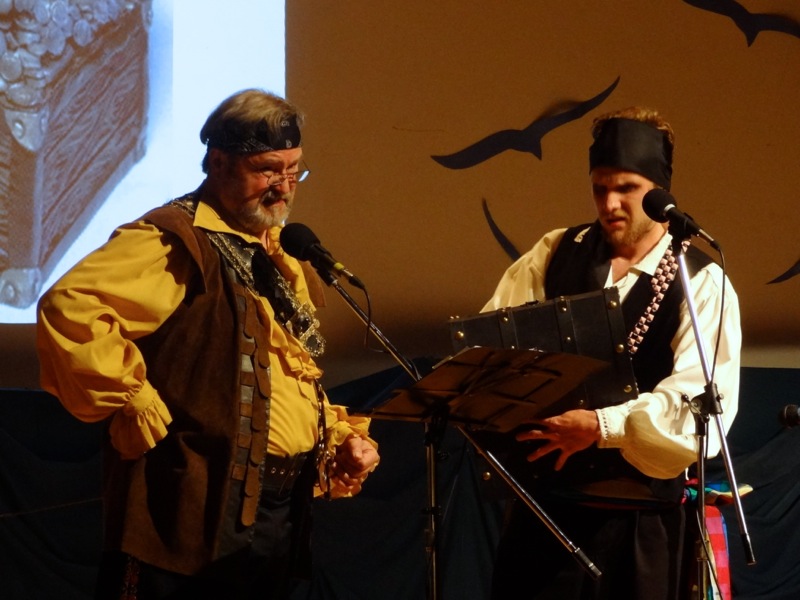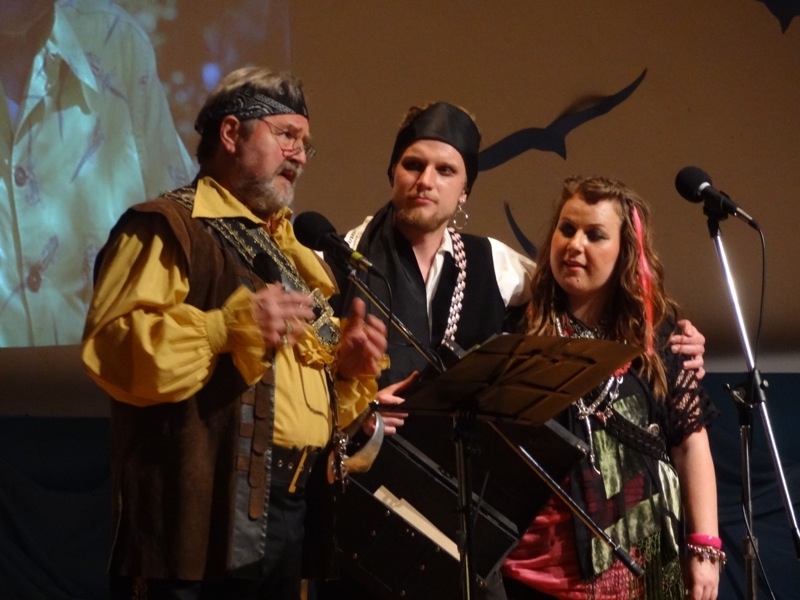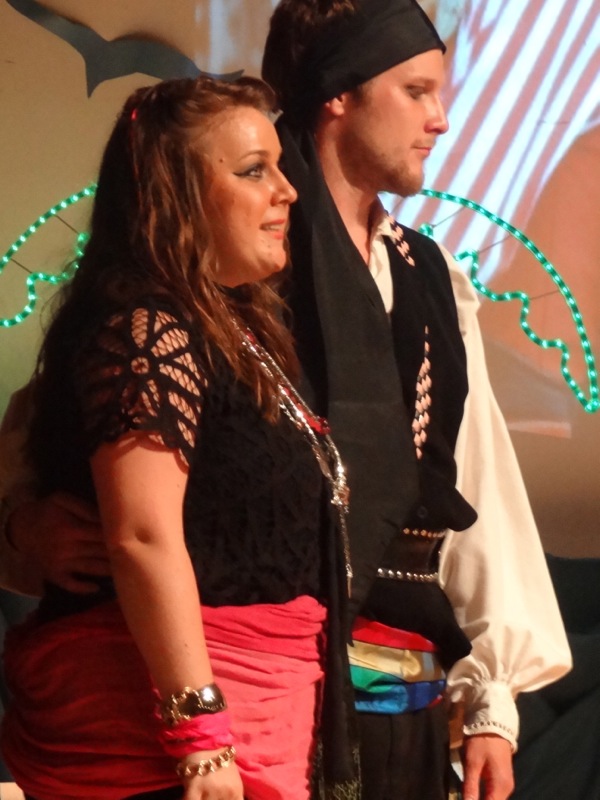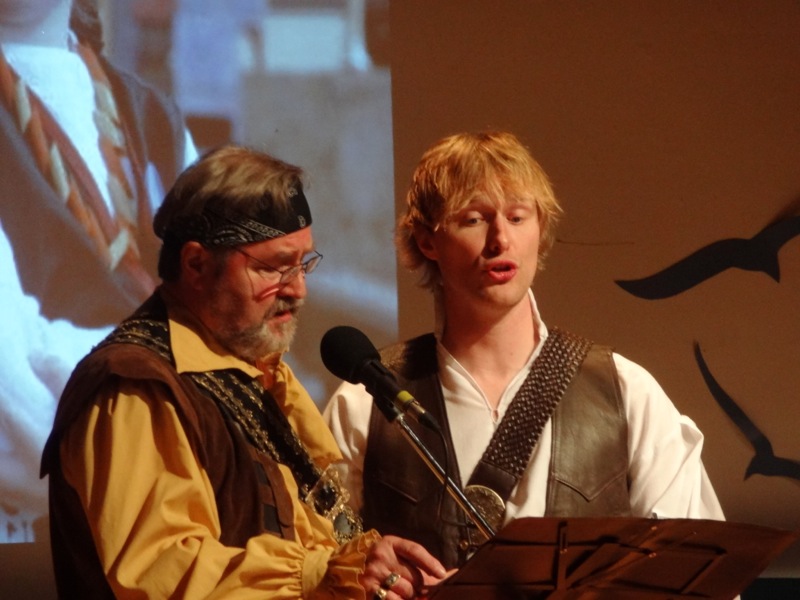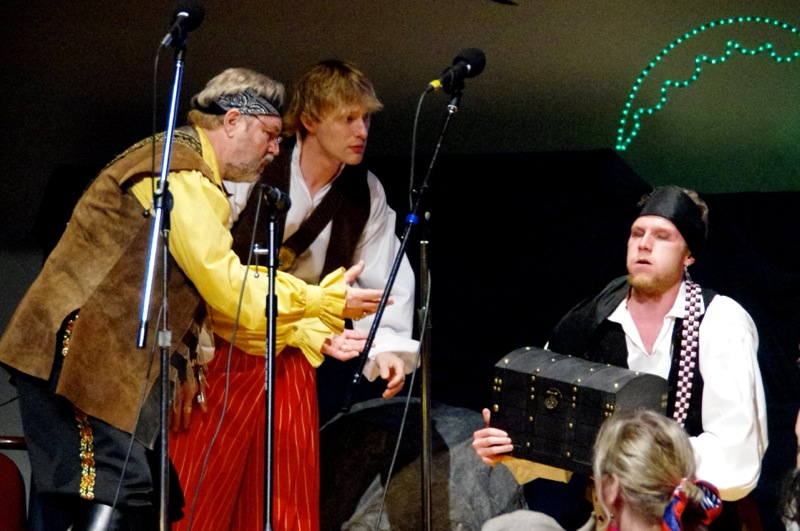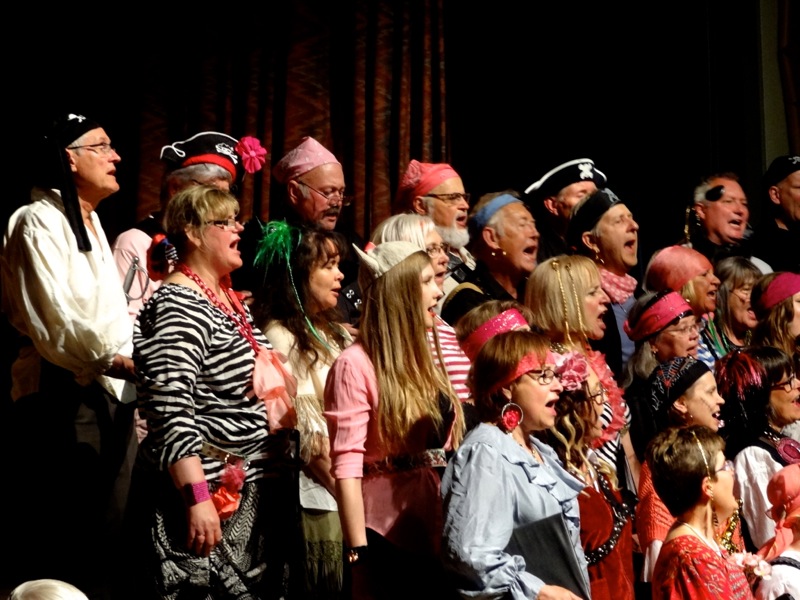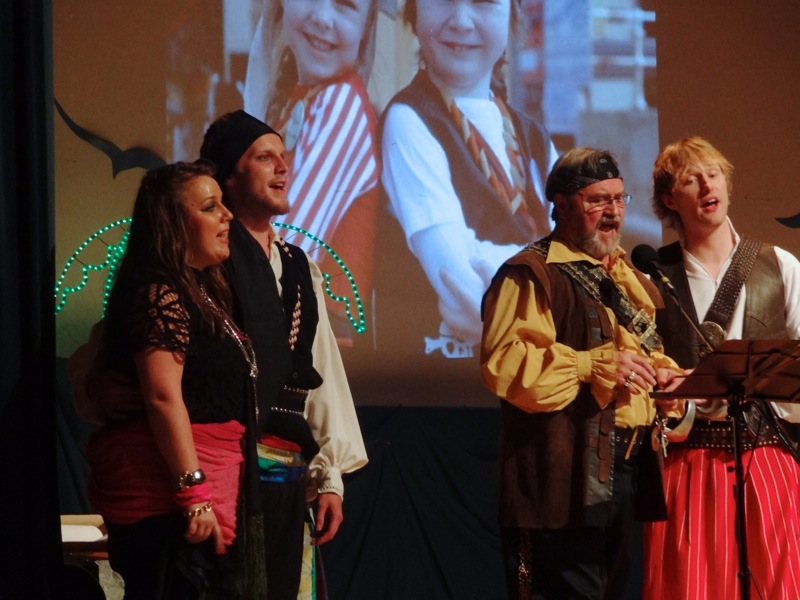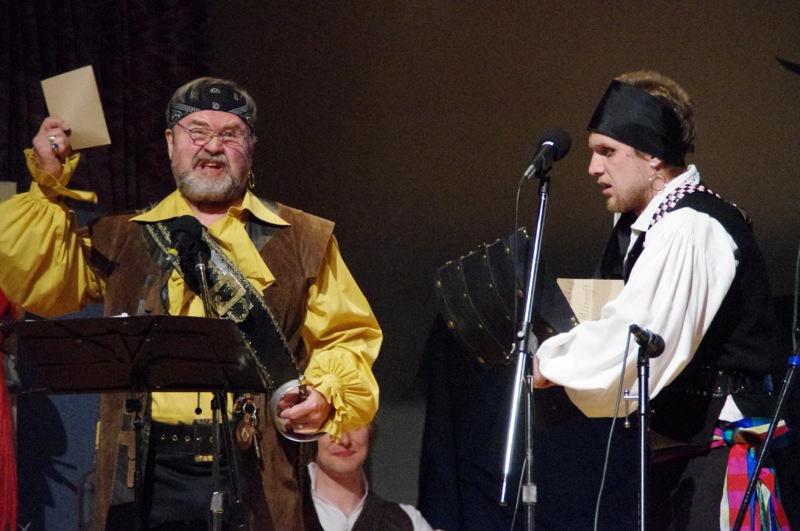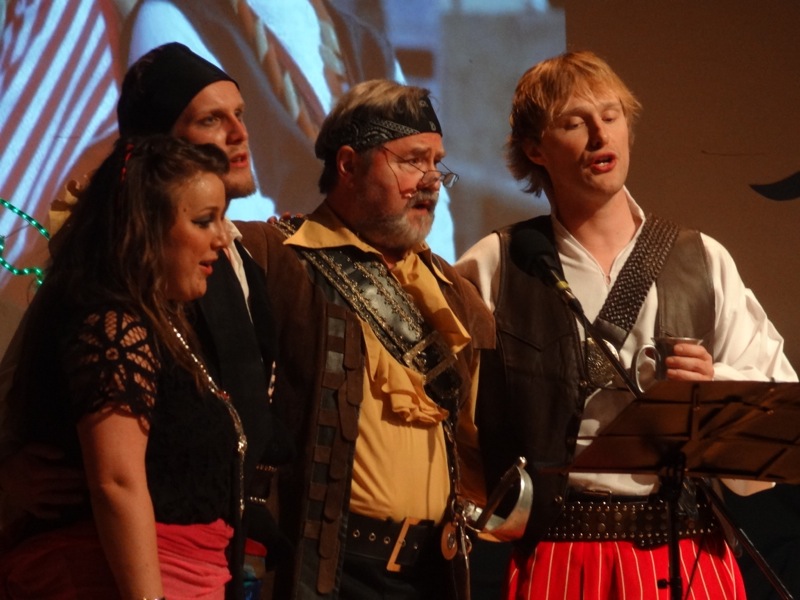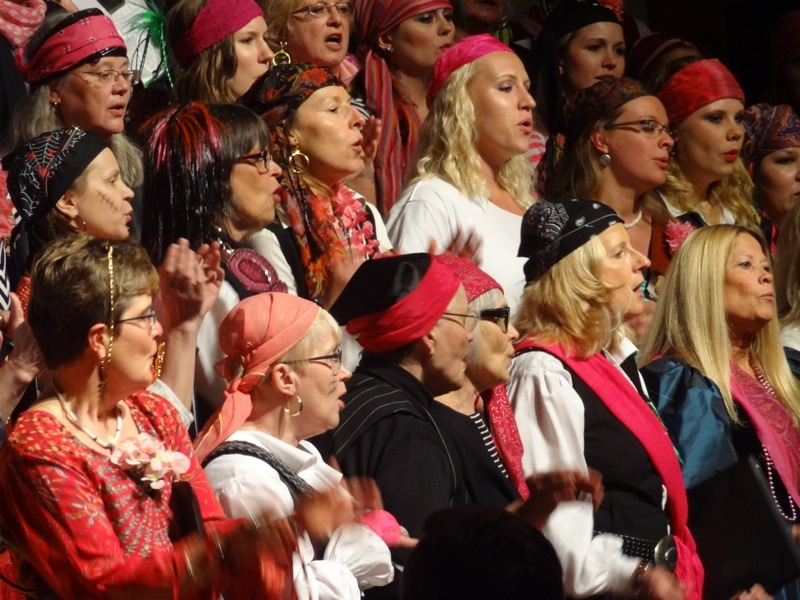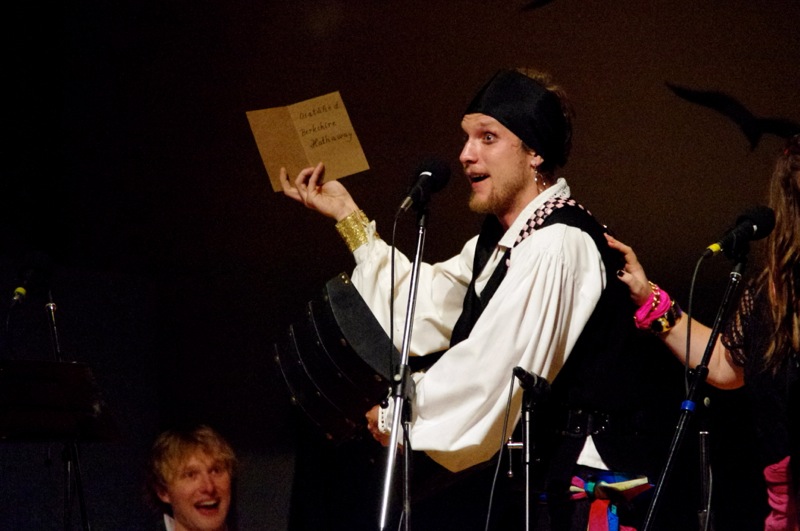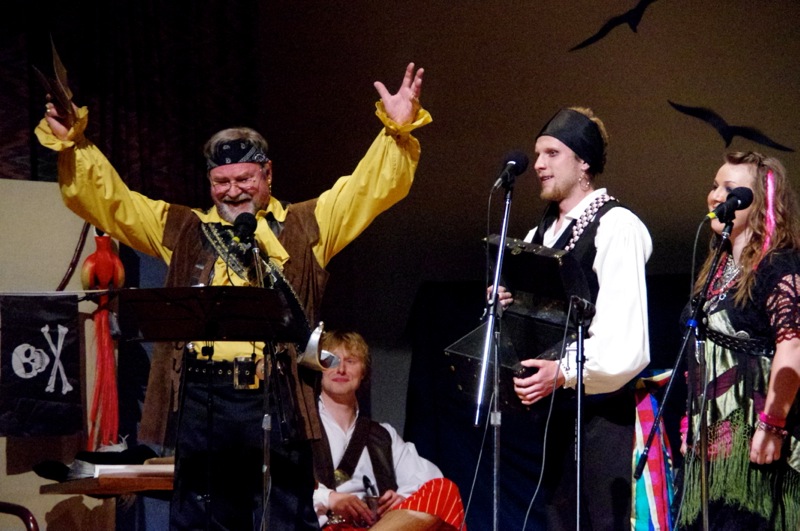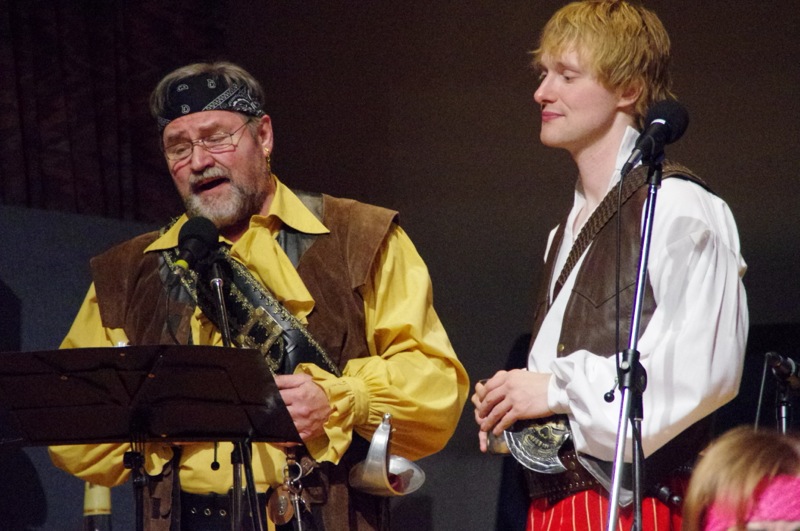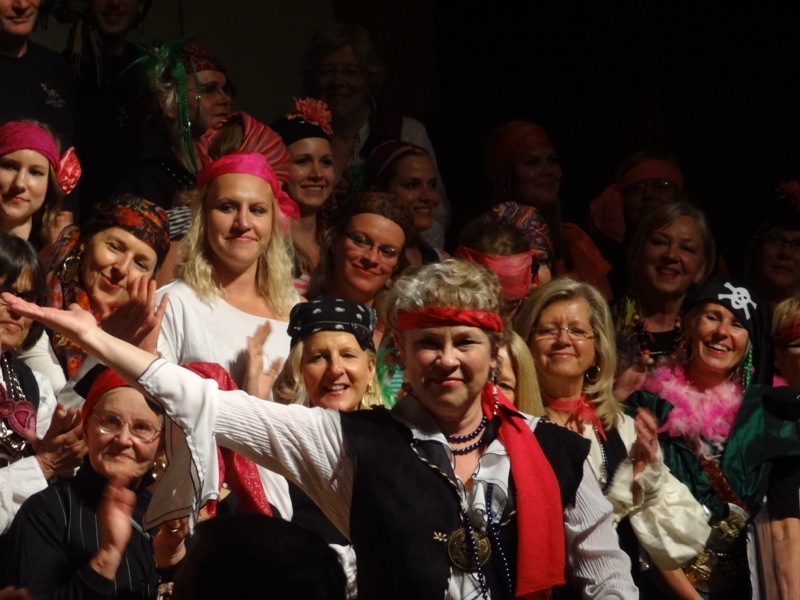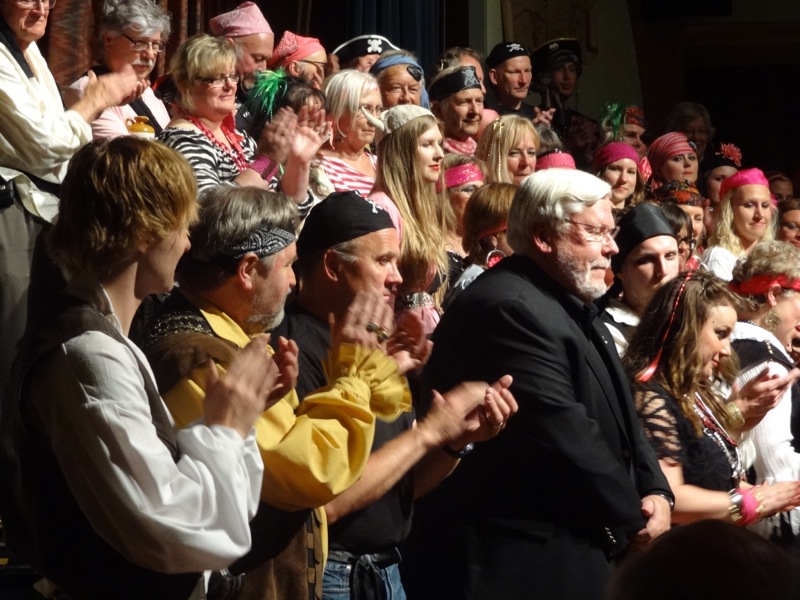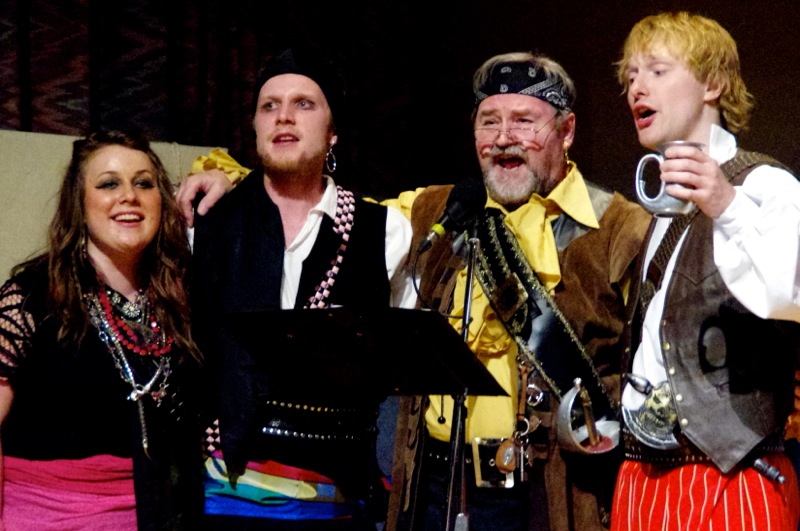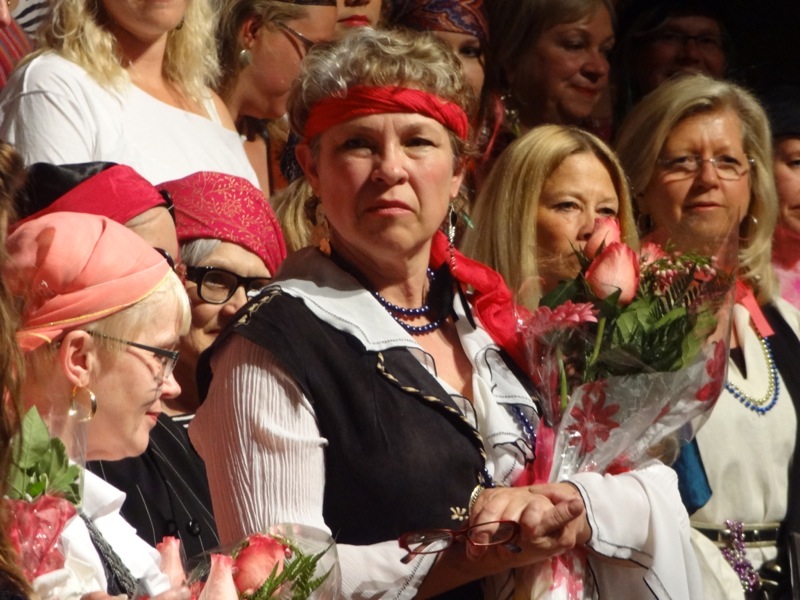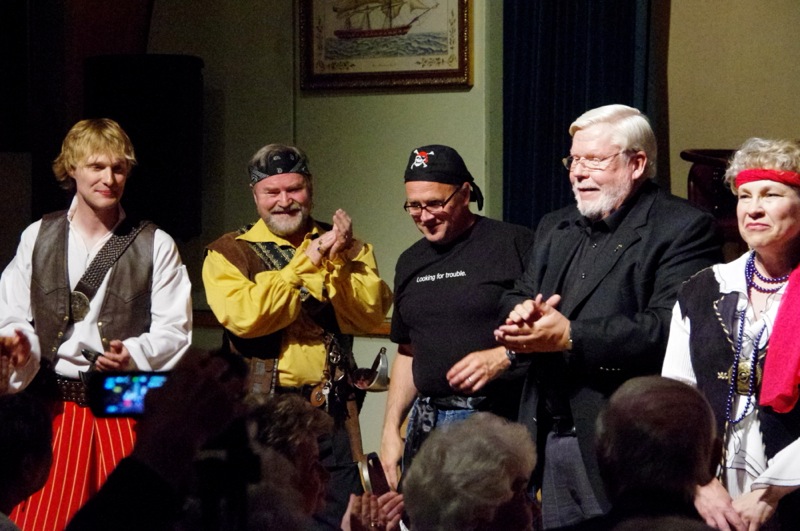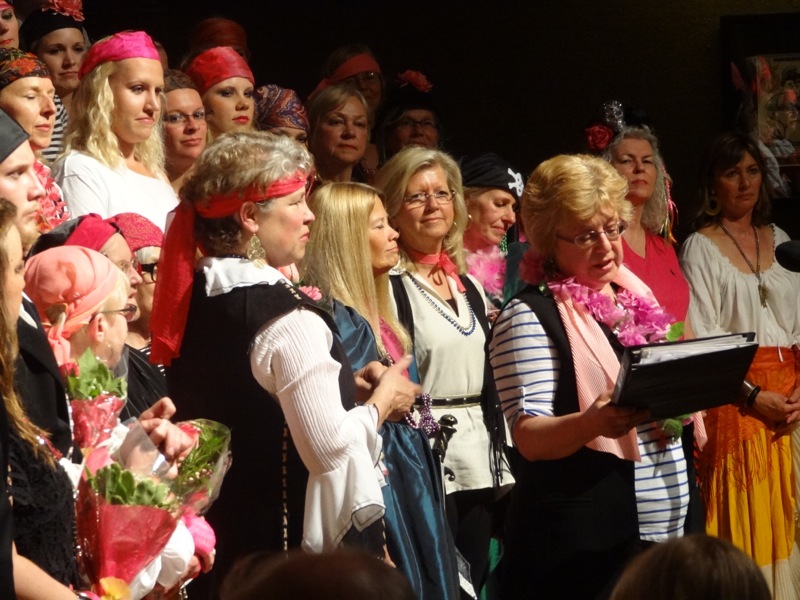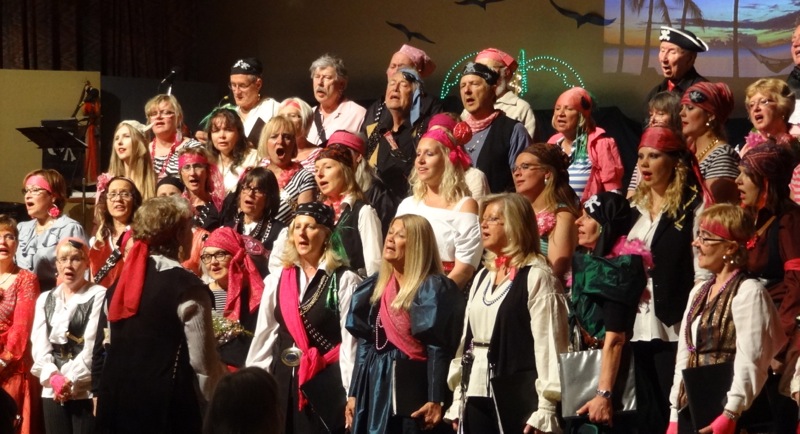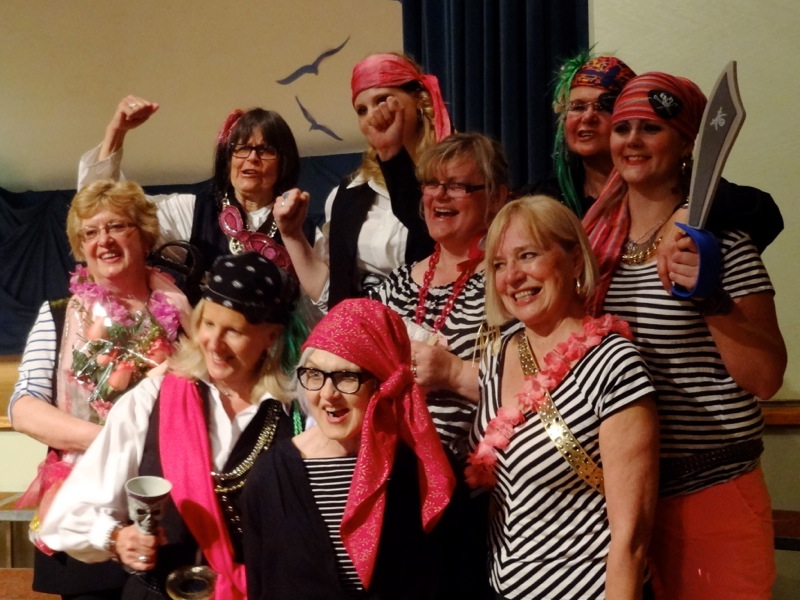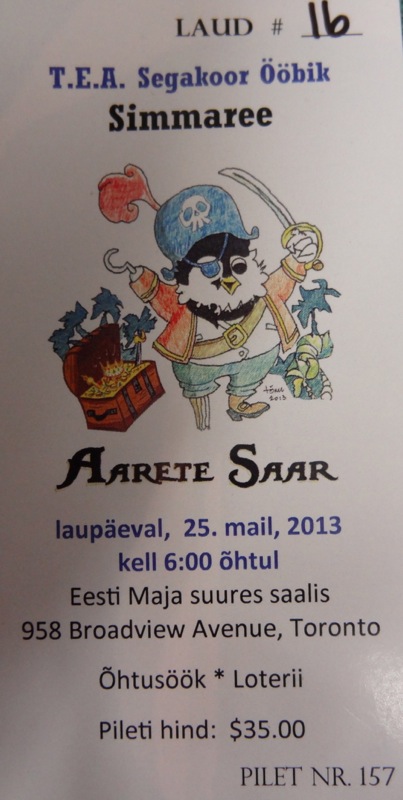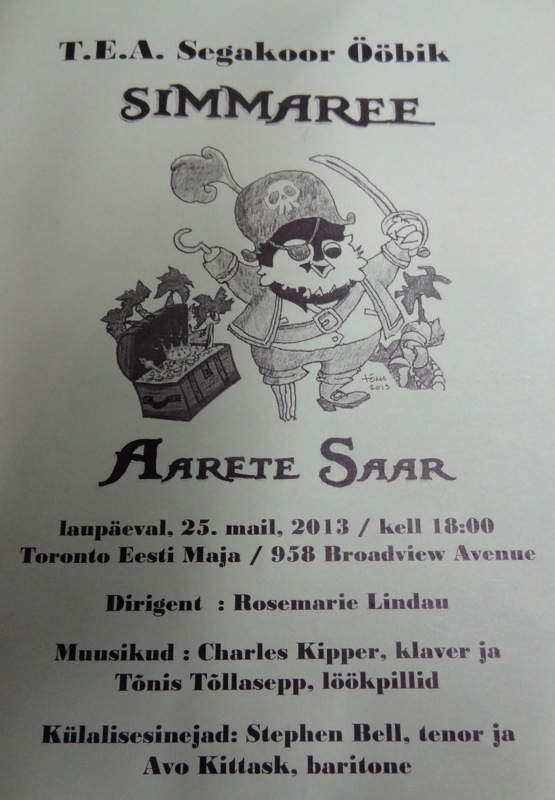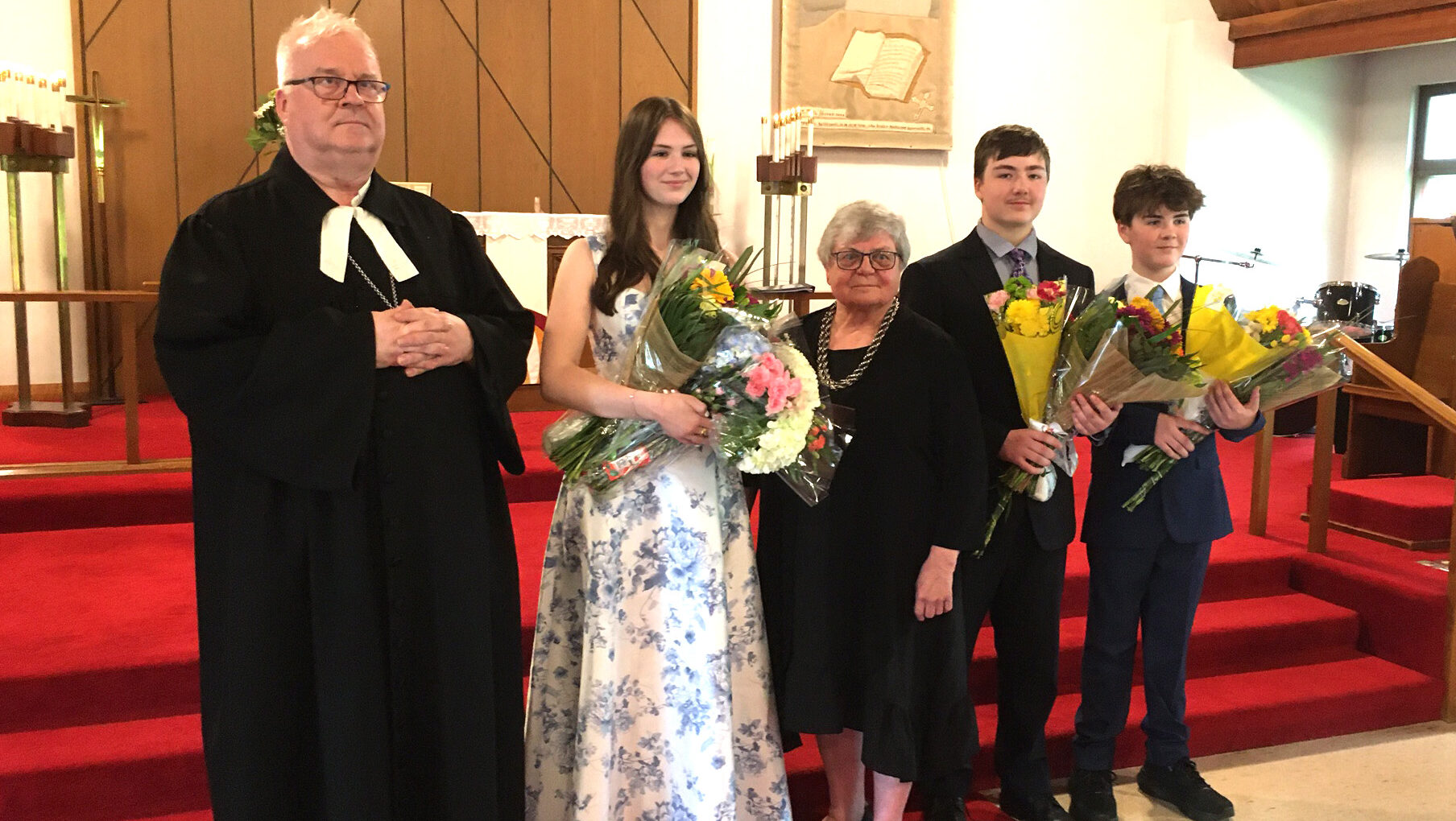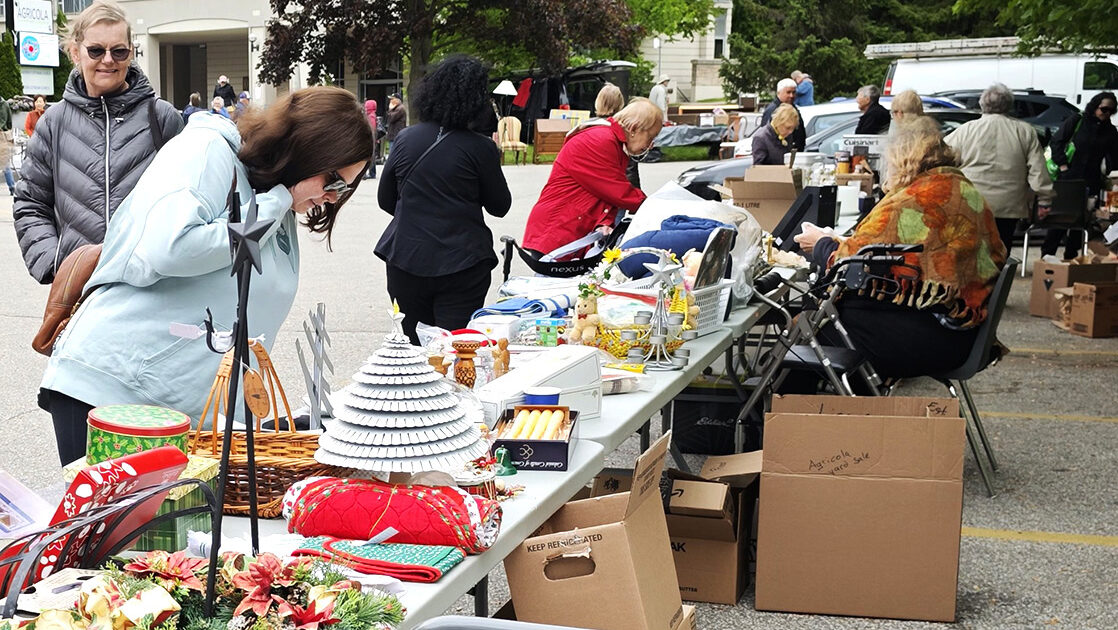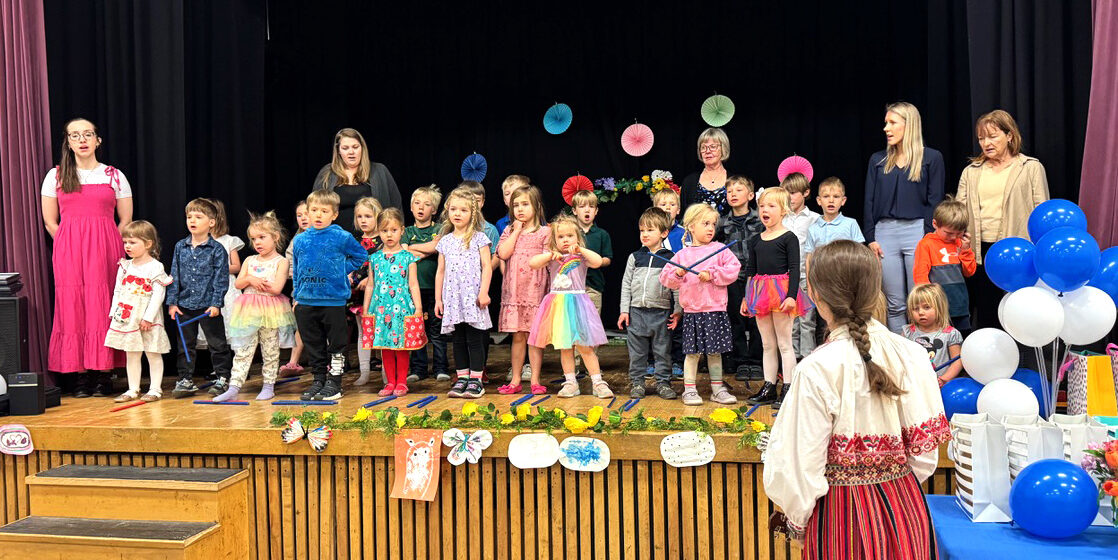We are familiar with Simmeree's current key players. Rosemarie Lindau – soloist and conductor, Charles Kipper – pianist aka orchestra, Avo Kittask – lead performer and prime vocalist, Anne Altosaar – conceptual creator and scriptwriter. This is where I'm compelled to halt and start explaining.
First the music. A traditional musical show tends to highlight and end with a big number, a song that captures its overall feel in terms of storyline and music. In this case the pick of the lot was a Canadian-born song written by the sea, reflecting not only the atmosphere of the concert – the world's oceans and its islands visited by forty singing would-be pirates – but also the deeper character of the choir – its younger members, its future.
“We Rise Again” is more than a song. It is an anthem of renewal. ,,We rise again in the faces of our children, we rise again in the waves out in the ocean”. Thank you, Mr. Leon Dubinsky, sitting somewhere on a rock by Cape Breton's seaside and perhaps jotting down another musical idea. And thank you whoever picked the song for this show, itself called ,,Aarete saar – Treasure Island”. Sung well at the end of both acts, the composition evolved into a renewed treasure.
Now let us come to the mother concept. The concert begins with a soloist. It is Rosemarie Lindau, and I am suddenly back at her Faculty of Music student concert a few years ago. Well, a few decades ago.
Back to the future. She sings a song from ,,South Pacific”. In its utter simplicity, possibly the most memorable one. In the original musical, it is sung by a mother as well. As the soloist walks down from the stage and starts to conduct, the choir continues the music; it is as if the mother is passing it on to her children, the choristers. Rosie, the mother figure. Super!
The above is basically my contribution to this week's Estonian Life. The reader might as well stop reading and look up Leon Dubinsky and find out what we may have in common with him and why he won't leave the Maritimes. As for me, I'll just continue writing for my own sake and try to say some regular nice things about the concert.
I begin anew. First I commend the singers, who for the most part, dressed to kill
(so pun-nish me!) as yo-ho-ho pirates, looked like they actually believed what they were singing. Esto faces in concert are often morose and expressionless. These were animated and infectious, pulling in the audience toward the stage. Suddenly, we were all pirates.
But there was also a subtler aspect of the music that impressed me time and time again. While I admire the work of Charles Kipper, the rock on which a Simmeree is often built and whose versatility knows no bounds, it was the drumming of Tõnis Tõllason that kept nagging me. Do I hear him or has he melted into the music? This musician is the quintessential percussionist. A question – who brought him into the equation? What an admirable sonic undercurrent in the musical atmosphere!
A sudden nostalgic experience was had by this scribe when conductor Rosie's son Roland Campbell came on stage with a guitar. Flashing before my eyes my lonely teen-age years in a remote northern town where a guitar became a young man's best friend! But this young man was not lonely for long for soon he was joined by the excellent Alexandra Wilbiks, the pirate captain's daughter. And Roland? With or without guitar, the redemptive feature of an old pirate's nasty life.
Having mentioned the need for redemption, I might as well get to the plot. As in the original Treasure Island, there's a mean old pirate with a murky past. But old Captain Raudjalg/Ironleg has a beautiful daughter and dotes on his deceased friend's son (Roland). The singing faces of the young allow him to “rise again” and become a redeemed human being. What a concept!
And there's that song again, underlying a script so fluid we did not need to think about it. Even when Ironleg adlibbed his own – truly part of his nature, there was writer-creator Anne singing her heart out in the front row of the choir.
What about Stephen Bell? Suddenly, gracefully, in the second act, we had a current professional opera stage performer in our midst. Dressed as a pirate, of course, like we all were. Looking for redemption or for someone to redeem? It was as if suddenly there was a person from Avo Kittask's previous life as a leading voice in the Canadian Opera Company coming to call him back. Beautiful solos and a duet in Estonian from one of my own memory lanes.
Ööbik (Eubique or Nightingale) has always managed to pull ensembles out of its nest. The pirate women sounded beautiful, especially in sea-sonal (!) Estonian. But it was the comedic Mati Matsoo with his frequent female cohorts that took the fishcake. During the clever rhythmic intervals, I was working out some Estonian lyrics for their Caribbean ditty. ,,Woman Smarter” indeed! More like women more plentyful in the choir!
As my eyes wandered along the distant walls during the applauses, I noticed the framed posters that Tõnu Altosaar had designed for a multitude of Simmarees over close to two decades while another of his buildings arose again in Dubai or downtown Toronto. His apt stage visuals changing with the musical numbers reminded me that nowadays we have become so multi-wired that all senses must be addressed. Otherwise we are left discombobulated.
The concert, in my opinion, had its imperfections, but the Simmaree just rolled over them. A concert, a show, a production, musical theatre, whatever it is or isn't – it's a Simmaree, one of a kind. Plus singing, conducting, accompaniment, writing (and food!) and stage direction by Barrett & Coverdale with enhancements by Eistrat, Meema, Virro et al – all good – and you have a show!
Amid the credits, I heard the choir's esinaine Marta Kivik mention Tartu College's umbrella Cultural Programme, which no one remembers actually evolved from the creation of Ööbik almost 20 years ago, when its youngest members were pecking away at the eggshells or attending kindergarten in Esto House.
“We Rise Again” – I hear it still – could well be a theme for the coming times when the Esto exiles and their children fade and when the newbies – new generations and new homeland heroes – fill our ranks. Ööbik certainly has its eyes on the future.
Andres Raudsepp
Fotogalerii – Fotod Eesti Elu
